Turkey Part 2: From Izmir along the Aegean coast to Didyma
Of ancient Pile of Stones and Wonders of the Ancient World (17)
After three days in Izmir we said goodbye to Dogucan, our kind warmshowers-host in Izmir. He told us, that the government imposed new restrictions due to the rise of Corona cases and that all restaurants and bars will close next Saturday and only be available for Take-out. He wasn’t sure though if this would only be the case in the big cities or nationwide. At least our favorite Gevrek bakery was as busy as usual and we almost caused a traffic jam standing in line with our bicycles and with all the cars around. We enjoyed a glass of sweet çay with our pastries and then we cycled through the center of Izmir to the Konak Meydani, the main square with the Ottoman Konak clock tower and the Yalı-Mosque, that is covered with beautiful tiles. The square also attracts pigeons as some older locals are selling pigeon feed in order to gain some extra money, whereas they’re taking measure in other places to get rid of the pigeons. Many pedestrians stopped and bought a reusable cup.
On our way out of Izmir we passed a big shopping mall with a Decathlon store. We decided to stop here to buy some patches for our tent and other small things, since we never know when we’ll come across another well-equipped outdoor store. After a loop way to cross the highway, we finally arrived at the big entrance of the mall. We parked our bicycles just next to the entry, so they wouldn’t be in the way. The mall was empty as usual, even though all the shops were open. We entered the Decathlon store and started to shop, when a security officer approached us and started talking and gesturing towards us. We didn’t understand him and he left. When we were at the check-out he came back with a colleague who translated for us. They wanted to know if the bicycles outside the mall belonged to us and told us that we should immediately remove them. They didn’t tell us why, but they seemed nervous and maybe they were afraid of an attack.
In the afternoon we cycled over some hills to the famous Pamucak beach, a beautiful long sand beach and then we turned inland towards the city of Selçuk, the jumping-off point to discover ancient Ephesus, and our destination for today. Usually when we arrive at a hotel on our trip, we immediately have to carry all the bags to our room (and our room is rarely on the first floor for some reason) and then have to park our bicycles and then check-in, so it always takes a while until we can relax. Today was different, we arrived at the Hotel Livia Garden and were invited to sit in the garden and drink a çay and the friendly owner explained us about all the sights to see around Selçuk. There were also some other guests around in the hotel, a nice change, as we have been the only guests in many places the last weeks and it suddenly felt like a holiday. The hotel was a real highlight for us, we had a room with an Ottoman wooden bay window and the breakfast was delicious. It was so great, that we decided to stay four nights so we would have enough time to discover the area. After our trip to Rhodes there was no time pressure anymore and since the borders towards the east remained closed, there is no need for us to hurry and we can spontaneously stay longer in a place than planned.
Discovering ancient Ephesus
The forecast predicted rain, so we decided to postpone our visit of Ephesus and discover some sights in Selçuk instead. We walked up a hill to the Basilica of St. John, that was built by the Byzantine Emperor Justinian. According to the information sign it must have been a place of real grandeur with marble steps and a monumental gate, even though that is hard to imagine today. The basilica was built in the 6th century and was the biggest church in Minor Asia together with the Hagia Sophia and an important pilgrimage site until the late Byzantine period. The Apostle John supposedly visited Ephesus twice and the tomb of St. John is marked by a marble slab in the sanctuary. In the 14th century the basilica was hit by an earthquake and during the following years attackers ruined the splendid church.
Just behind the basilica is the Ayasuluk Fortress, that is partially restored and has got great views over the center of Selçuk and towards the ocean in the distance. We were ready to find out more about the ancient world and since it started raining, we decided to visit the Ephesus Museum that contains artefacts from Ephesus and the Temple of Artemis. It would have been better to visit the museum after visiting Ephesus, so we could see where the finds actually came from, but it was still interesting and we were really looking forward to discover Ephesus the next day and to learn more about life in ancient times.
The sun came back the next morning and waiting to visit Ephesus was definitely worth it. We cycled the 3 km from Selçuk to Ephesus. On our way we passed an empty field with only one reconstructed pilar, that once belong to the massive Temple of Artemis, one of the Seven Wonders of the Ancient World. It was dedicated to the fertility goddess Artemis, whose cult brought wealth to the city. There used to be 125 columns and each of them more than 18 meters high. Later during our trip we would visit the Temple of Apollo in Didyma with a similar size to get a sense of the grandeur the Artemis Temple once must have had. But now it was time to finally visit the most popular ancient site of the Aegean coast – Ephesus.
A visit of this once fourth largest city in the Roman empire is definitely a highlight and it gives you a great insight of what life in the ancient times must have looked like. The Library of Celsus is absolutely stunning. It was the third-largest library in the ancient world (after Alexandria and Pergamon) and protected 12’000 scrolls from extreme temperature and moisture. This best-known monument of Ephesus can probably be seen on every picture and postcard and it has been extensively restored. The convex façade reminded Lisa of the ancient city of Petra in Jordan. There were more visitors here than in every other place we visited in Turkey so far, but it was probably still quiet compared to a normal tourist year. The usual cats were also strolling around, unaffected by the visitors.
We took our time and spent at least three hours discovering Ephesus, we just couldn’t get enough of all the old pile of stones. We strolled from the old Harbor Road along the Curetes Way to the Upper Agora and were impressed by the many fountains along the road, that were dedicated to different Roman Emperors. Ephesus was erected on the ocean and had a harbor, but today the ocean is 12 km away. The Curetes Way is Ephesu’s grandest street and was once lined with shops and statues of emperors and deities. There are also supposed to be some latrines that the wealthier Ephesians possessed. They were allowed to reserve their own toilet seat back then. Unfortunately, we somehow missed them. We also didn’t see the foot imprint on the pavement that leads to the ancient brothel.
Instead, we visited the restored Terraced Houses that were built for the wealthy locals and provide an intimate glimpse into the everyday lives of ancient Ephesians. The houses include a lot of marble and beautiful mosaics and frescoes. We wouldn’t refuse living like this.
Today, only about 20% of Ephesus has been excavated and you can still see archaeologists digging, so maybe we have to come back one day to see some new discoveries. But for now, we had enough and were overwhelmed by all the wonderful impressions.
We cycled back to the modern world and went to the recommended Ejder Restaurant for a big Turkish lunch. We ordered Imam Bayildi (translation: the Imam fainted): eggplants filled with onions, tomatoes and peppers and slowly-cooked in the oven. Usually, the Turkish dishes are named after their origin (Iskender Kebap, Adana Kebap), but some dishes retrieve their names from the palace kitchen of the Ottoman sultans such as Kadinbudu Köftesi (translation: Lady’s thigh meatballs), where the cooks in the palace kitchen daydreamed about the mysterious harem. No matter the name, Turkish meals are absolutely delicious and we would have enjoyed our lunch even more, if we would have realized that from the next day on all the restaurants would be closed and could only Take-Away or paket servisi in Turkish.
Hungry in the mountain village of Şirince
We visited the mountain village of Şirince, that lies 9 km southeast of Selçuk. A scenic narrow road wends its way up into the hills passing grapevines. When we left we didn’t realize that today the restaurants would definitely close and after 400 m of elevation gain we arrived quite hungry in Şirince. This beautiful village with its stone-and-stucco houses and red-tiles roofs reminded us a little of Berat in Albania. As in many other places along the Aegean coast, there was a population exchange in Şirince after the Greek-Turkish war from 1919 – 1922 and Turks from northern Greece (Thessaloniki and Kavala area) settled in Şirince. The new inhabitants built a mosque but also retained the traditional viticulture and today you can find sweet fruit wines in local restaurants and cafés. Every store seems to offer wine tasting. But we were too hungry to try peach and mulberry wine.
Unfortunately, all the restaurants and cafés were closed and only a few Kebap stands remained open on the main plaza and there was no vegetarian option available. The few tourists around also looked a little bit lost. Every available bench was full with families eating kebabs and ice-cream, surrounded by hungry cats and dogs. We realized that those new restrictions will have quite a big impact on our journey, as sitting in a café from time to time and tasting the local cuisine is an important part of traveling for us that we’ll miss from now on. After a while, we did find a restaurant that had vegetarian Gözleme (thin pancakes with cheese) on the menu. A little disillusioned we returned back to Selçuk and were happy that the hotel restaurant was still open for evening meals, at least for the hotel guests. From now on, we would have to look especially for accommodations with an open restaurant when we’re not camping.
Nice police officers and mystical ruins
The day we left Selçuk was exhausting with many ups and downs and a strong headwind. On this next stretch of our journey we wanted to explore some of the ancient settlements south of Ephesus that attract less visitors: Priene and Didyma. We arrived tired close to Priene and found a flat spot next to a field, very far of the road. It got dark and no one saw us and we didn’t count on any vehicles driving by. But of course, always when you think that, someone comes around. And today was no different – a local farmer drove by and saw us camping. Usually we would just wave and say hello and smile and everything was fine. But he didn’t really react to that, so it was no surprise for us, when after we finished our dinner, several police officers showed up and asked for our passport, our entry stamps and our plans. It was a weird situation. We told them, that we wanted to visit the ancient site of Priene the next day and then continue towards Bodrum (150 km away). They asked us to pack everything together and continue to Bodrum the same night. Then they saw our bicycles behind the tent and they realized that this would be hard to do and additionally there is a curfew going on during weeknights, so we wouldn’t even be officially allowed to move at night. We had to instruct them about the official curfew and they told us that this wouldn’t count for tourists (we knew that, but sometimes it’s better to play naive). We communicated with the help of google translate, as our Turkish vocabulary is as limited as their English. In the end, we had to promise them, to leave early next morning and not to stay here a second night. By the time they left we all smiled and then one of the officers tipped something in his mobile phone and showed us the English translation: “Take care of yourself and we love you.”
As promised to the police we left early without breakfast and continued our trip. We visited Priene, once a port city with two harbors. Today much is left to imagination compared to Ephesus, but the location on a mountain with views across the patchworks fields is great. We were the only visitors there that morning and we even entered without a ticket, as it wasn’t officially open yet. The morning light in the ruins was absolutely magical, as the ancient settlement is surrounded by shady trees. It almost felt a little like walking through Angkor Wat. We had a good time climbing over the columns around the Temple of Athena and exploring the well-preserved Hellenistic theatre. We can highly recommend a visit of Priene as it’s got a very different atmosphere than the other ancient sites we’ve seen so far.
On our way back, we finally bought the ticket and then we cycled further south. Sadly, all the restaurants next to the site were closed and didn’t even offer a take-away coffee. The next villages also didn’t have any supermarkets or take-aways and for 40 km we cycled without any infrastructure. We both caught a cold the last days and Lisa started to feel worse and every climb therefore felt more exhausting than usual. It wasn’t fun anymore and so we decided to call it a day and put up our tent already in the early afternoon. We found a wonderful spot directly on the ocean and cooked Lisa’s favorite dish – spicy Thai curry with rice. It was definitely the right decision, although we didn’t make many kilometers today.
Didyma: Reflection of a Wonder of the Ancient World
After many hours of sleep and listening to the waves our energy came back the next day and we packed our things together and cycled the last kilometers towards the city Didim. We found a hotel where they served breakfast and just boldly asked for a coffee and some çay. We were so grateful to be able to sit down in a café and drink something. Now it was time to discover the Temple of Apollo in ancient Didyma (today Didim). It was not a city in ancient times, but a religious center and famous for the oracle of Apollo. The astonishing temple was the ancient world’s second largest, with only five columns fewer than the Temple of Artemis. Since the latter has only one column left standing today, visiting Didyma really helped us visualize the grandeur of the Artemis’ temple. We were the only visitors. Again. It was impressive to walk around the wide steps and marvel at the three columns left standing.
In the last days we were able to learn more about the Romans, Greeks and Byzantines who left their marks on this ruin-strewn stretch of coastline with all its weathered theatres and temples and can now even classify the three types of Greek columns in one look. But now, after seeing various pile of stones, we were ready for some nature and decided to visit Kapiriki on Lake Bafa. More about this special place in our next post.

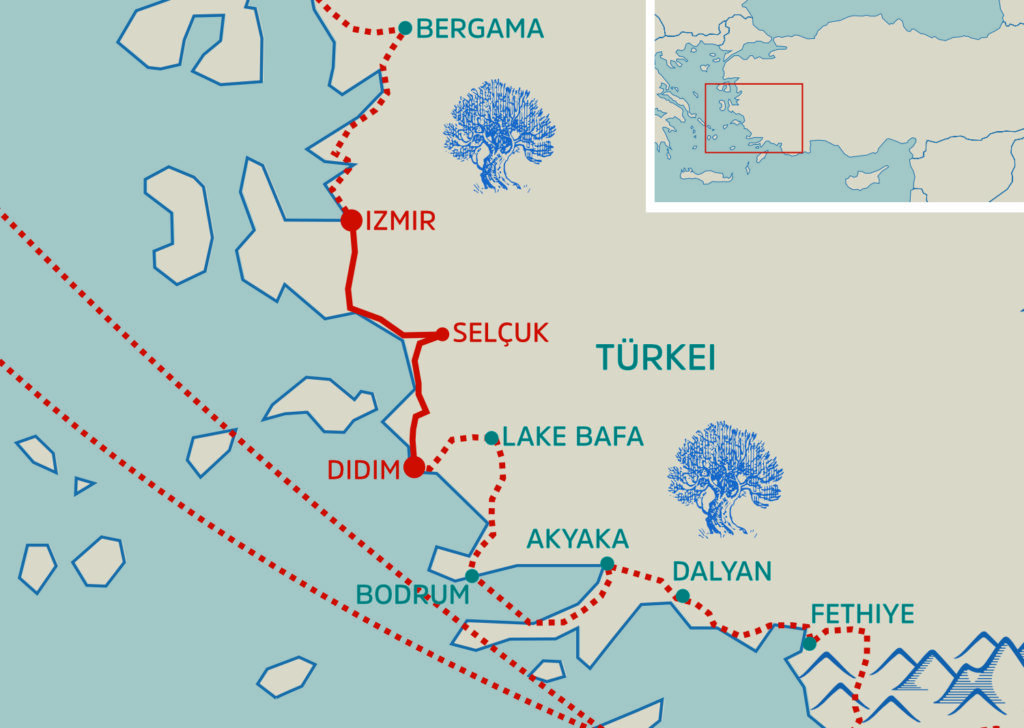
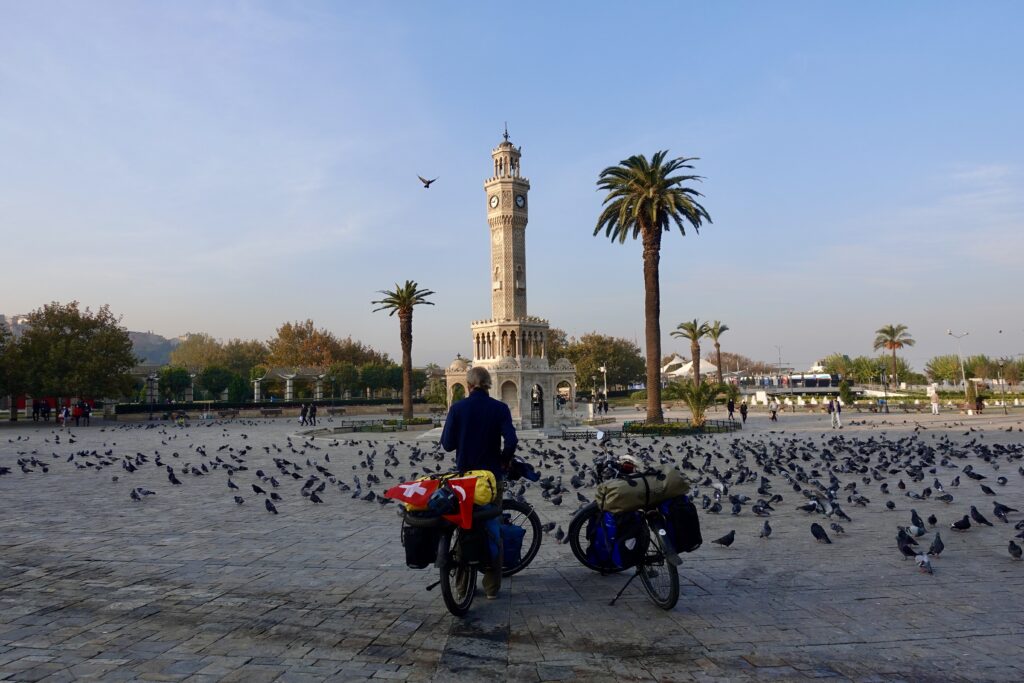
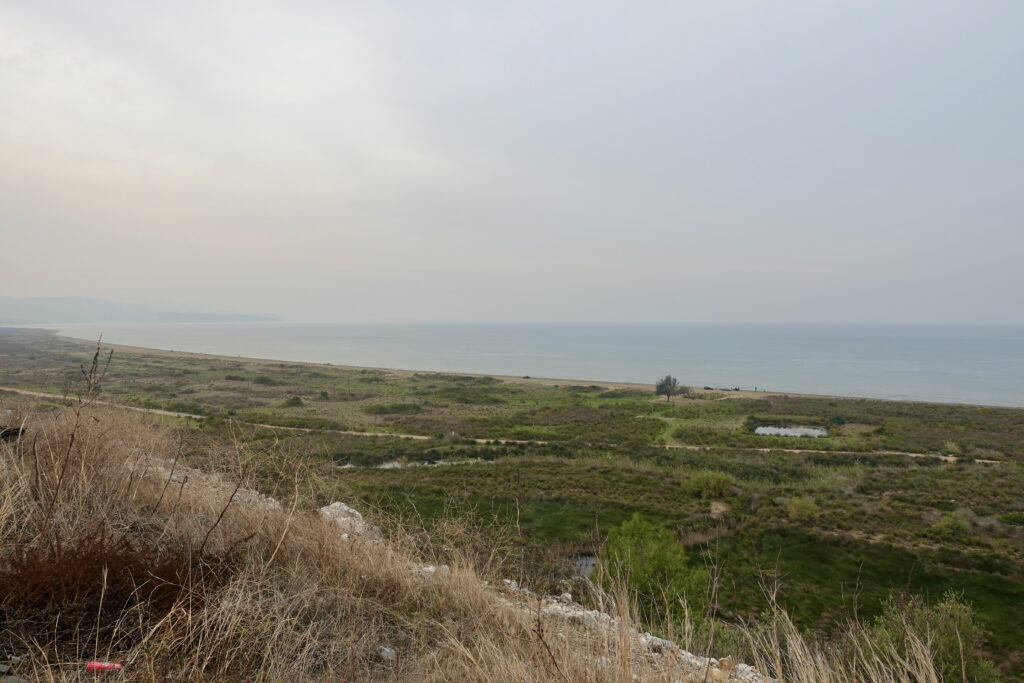
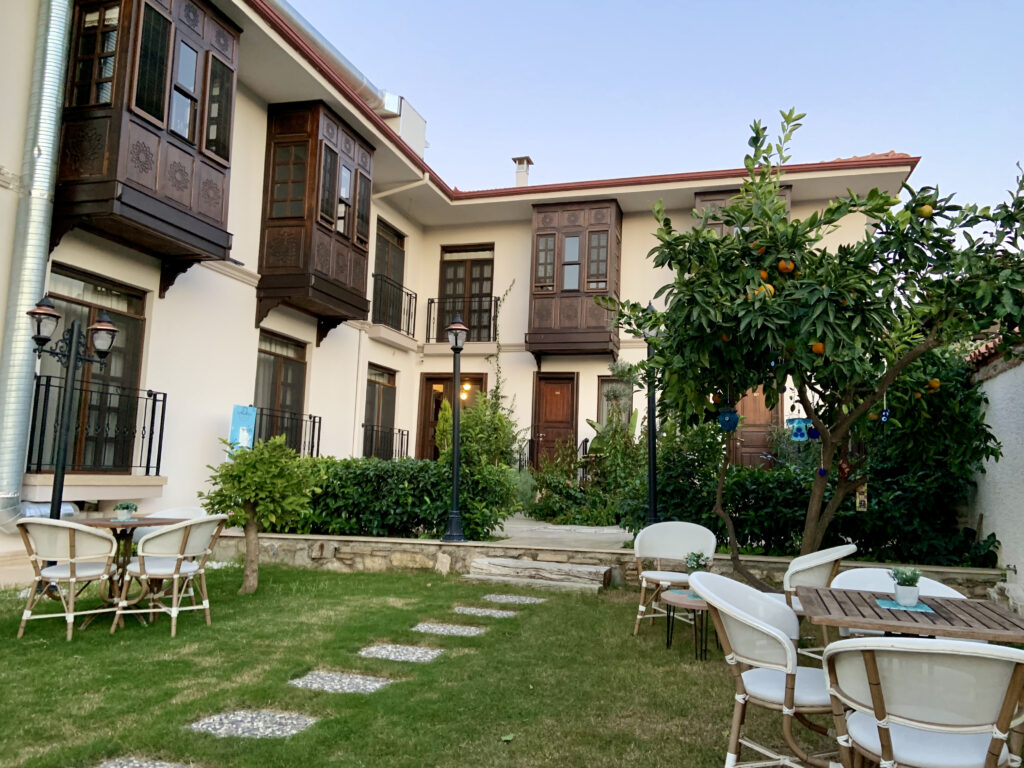

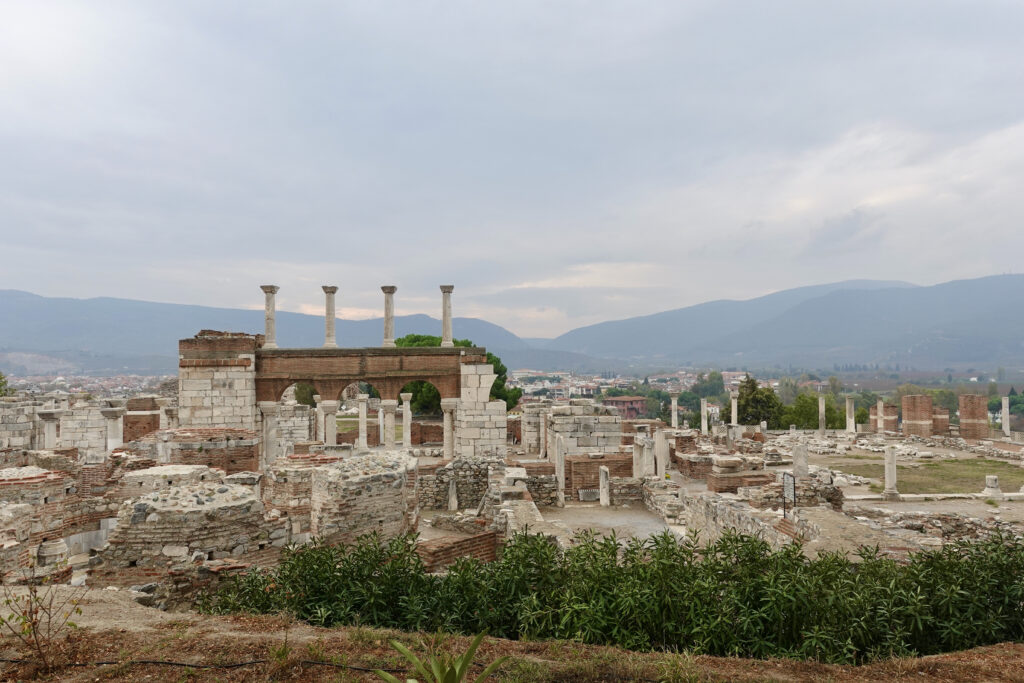

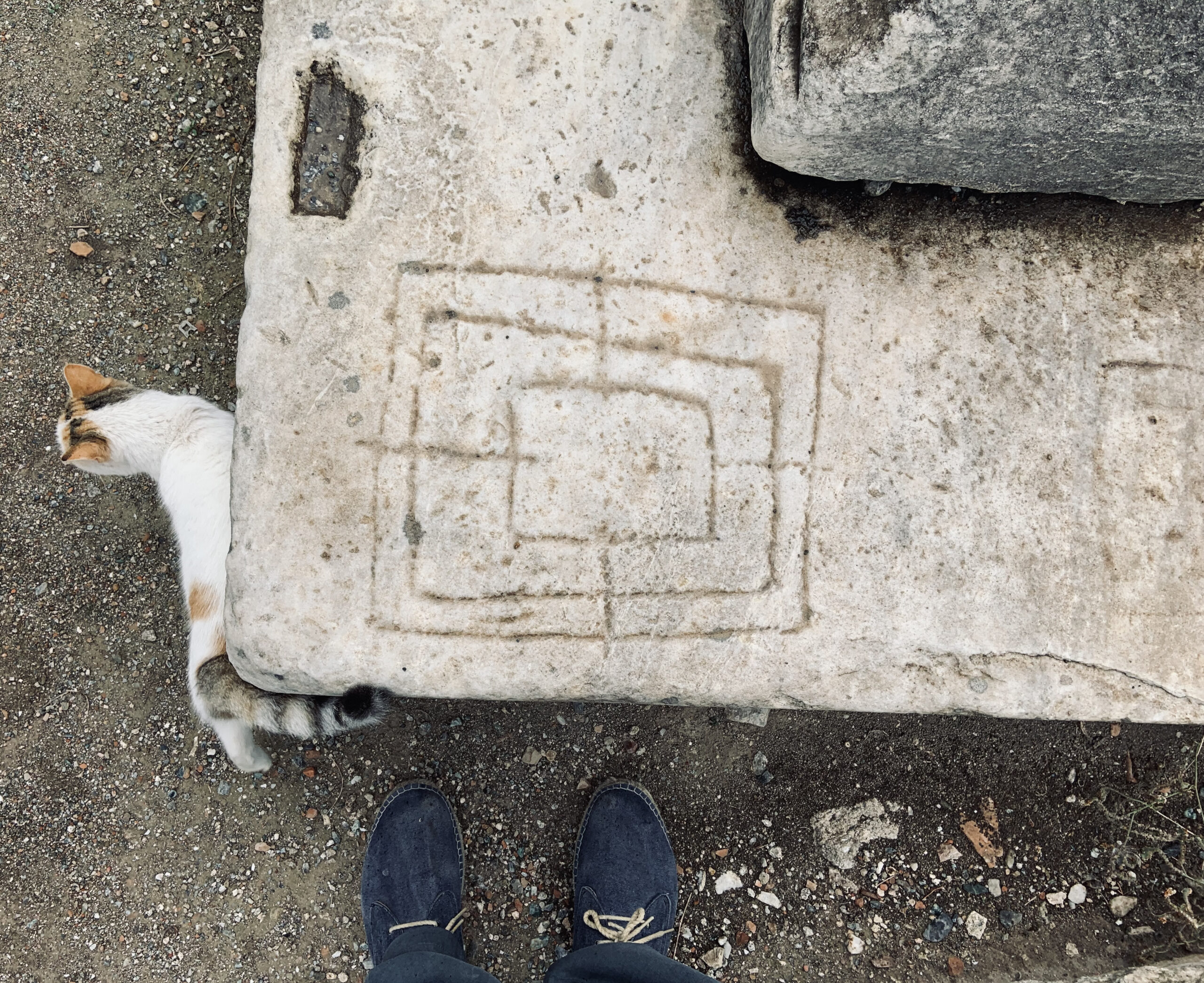
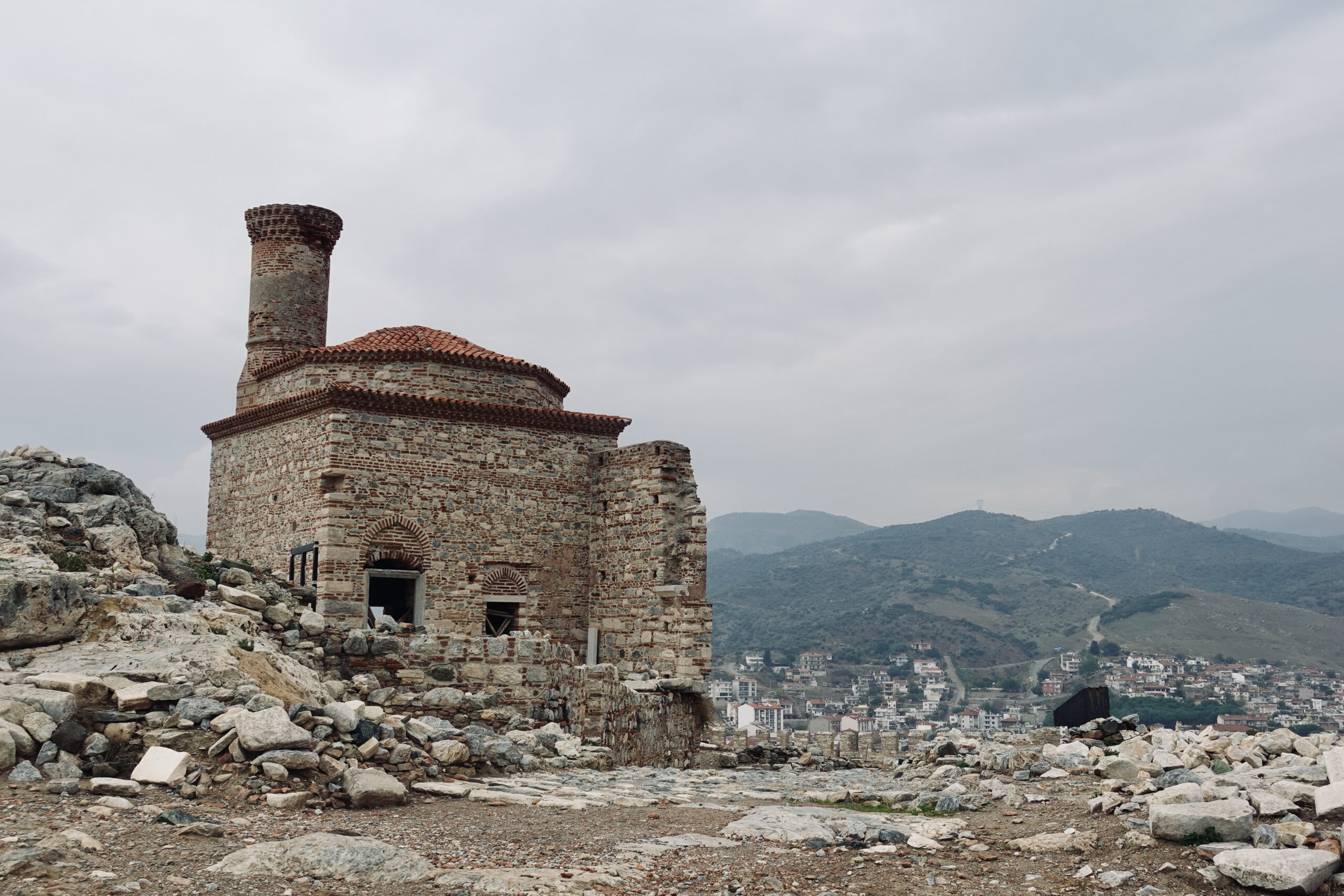
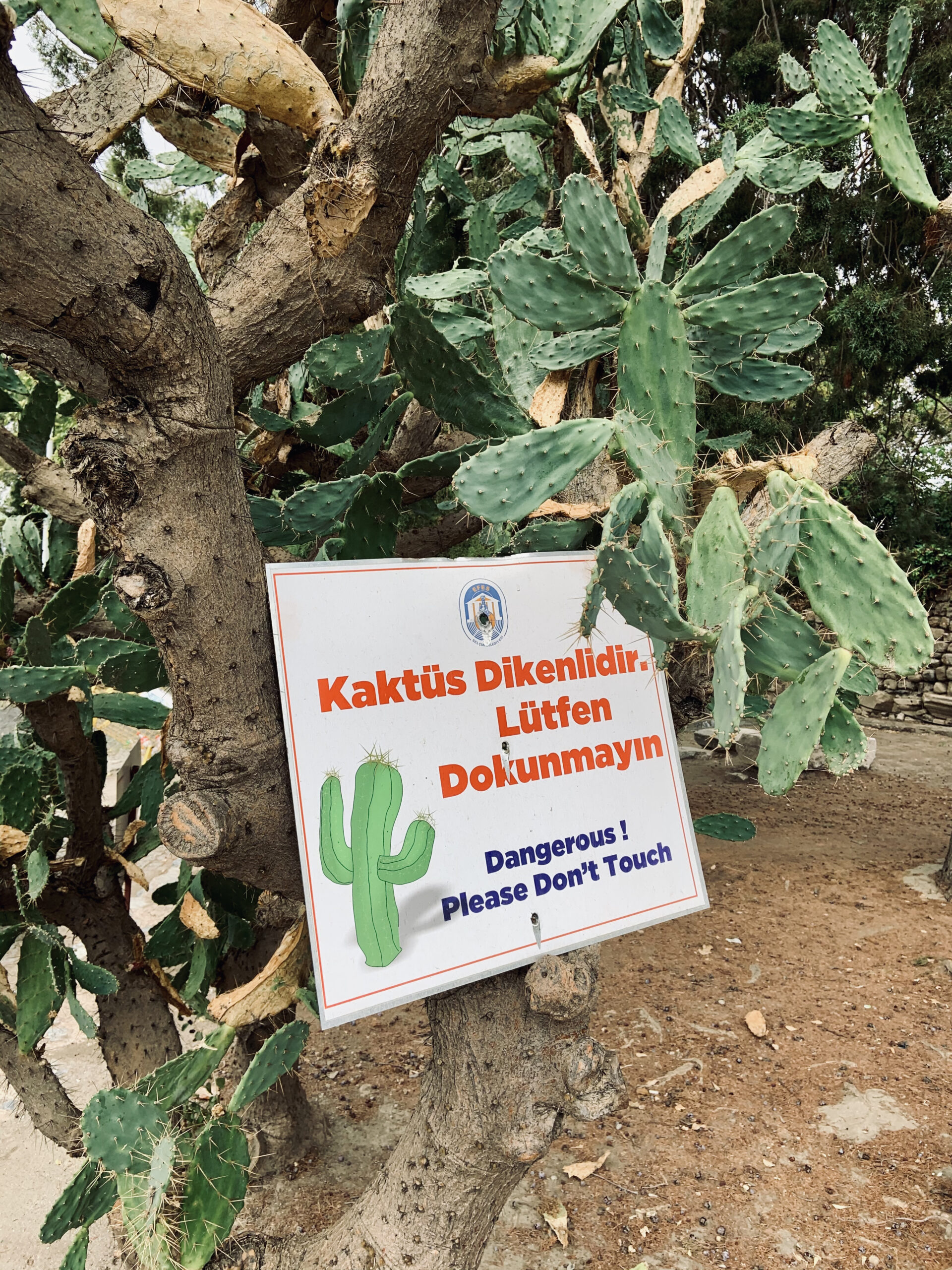
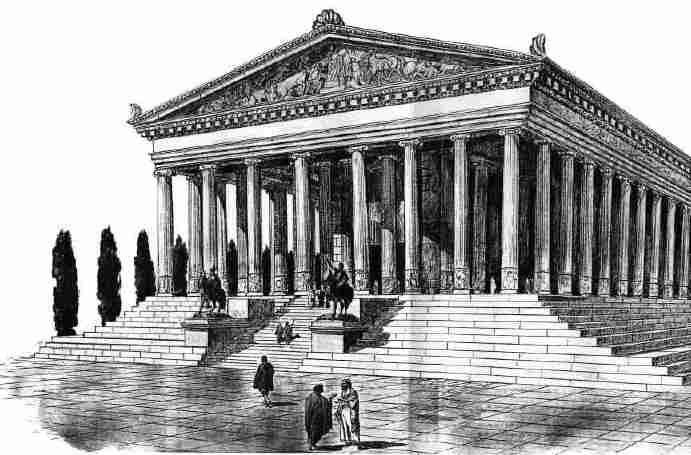

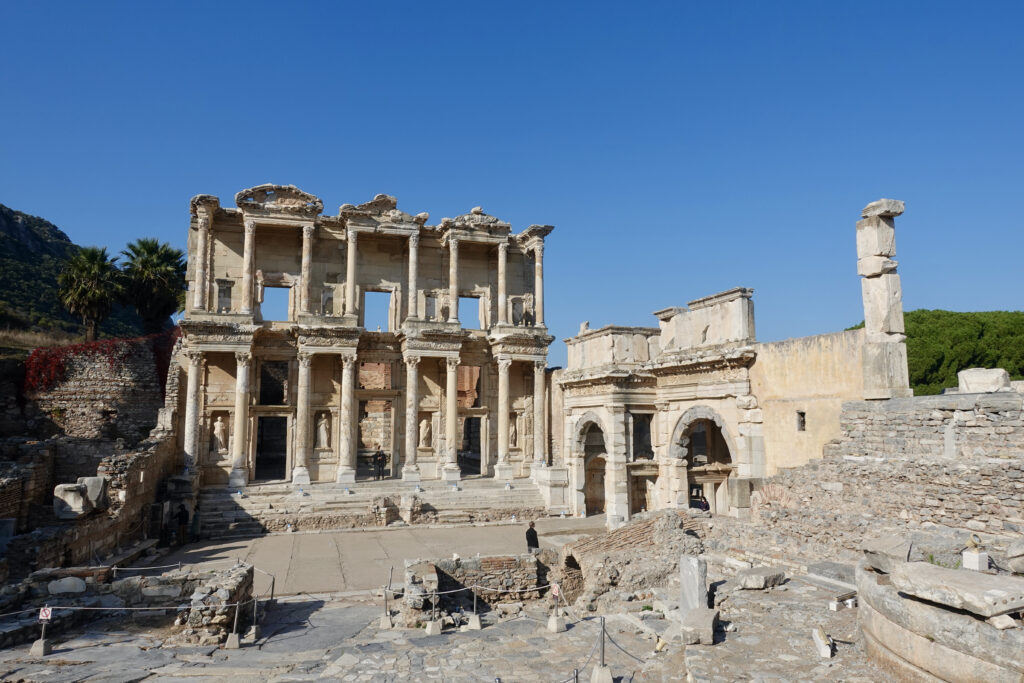
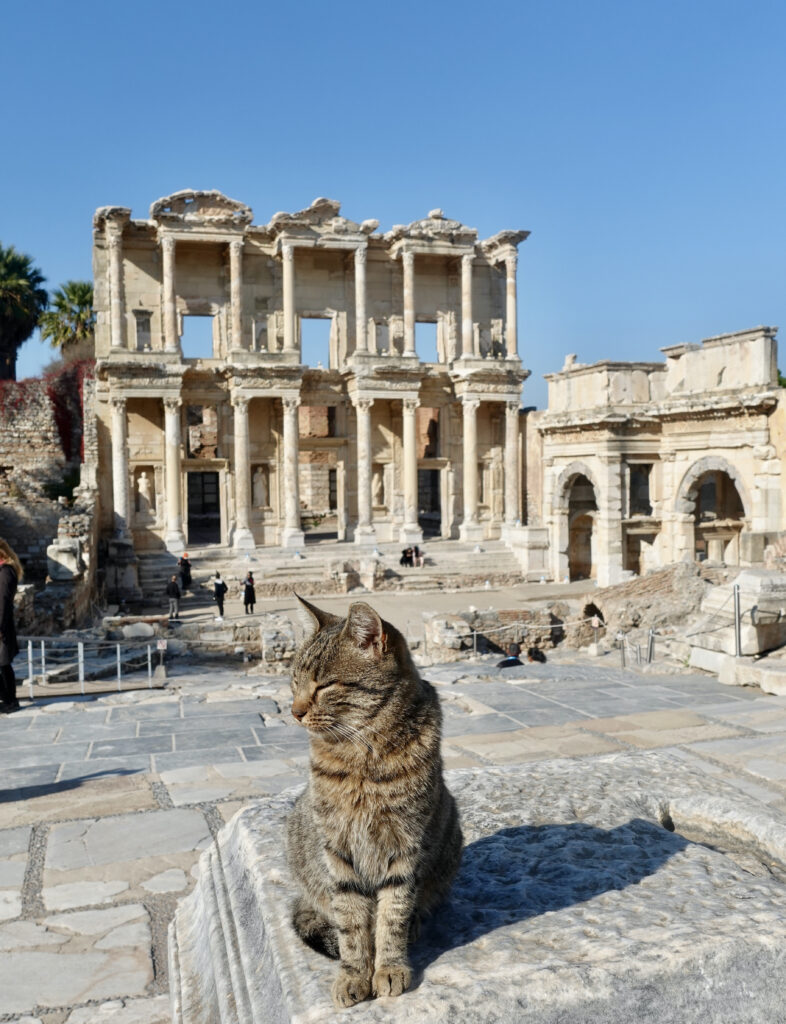
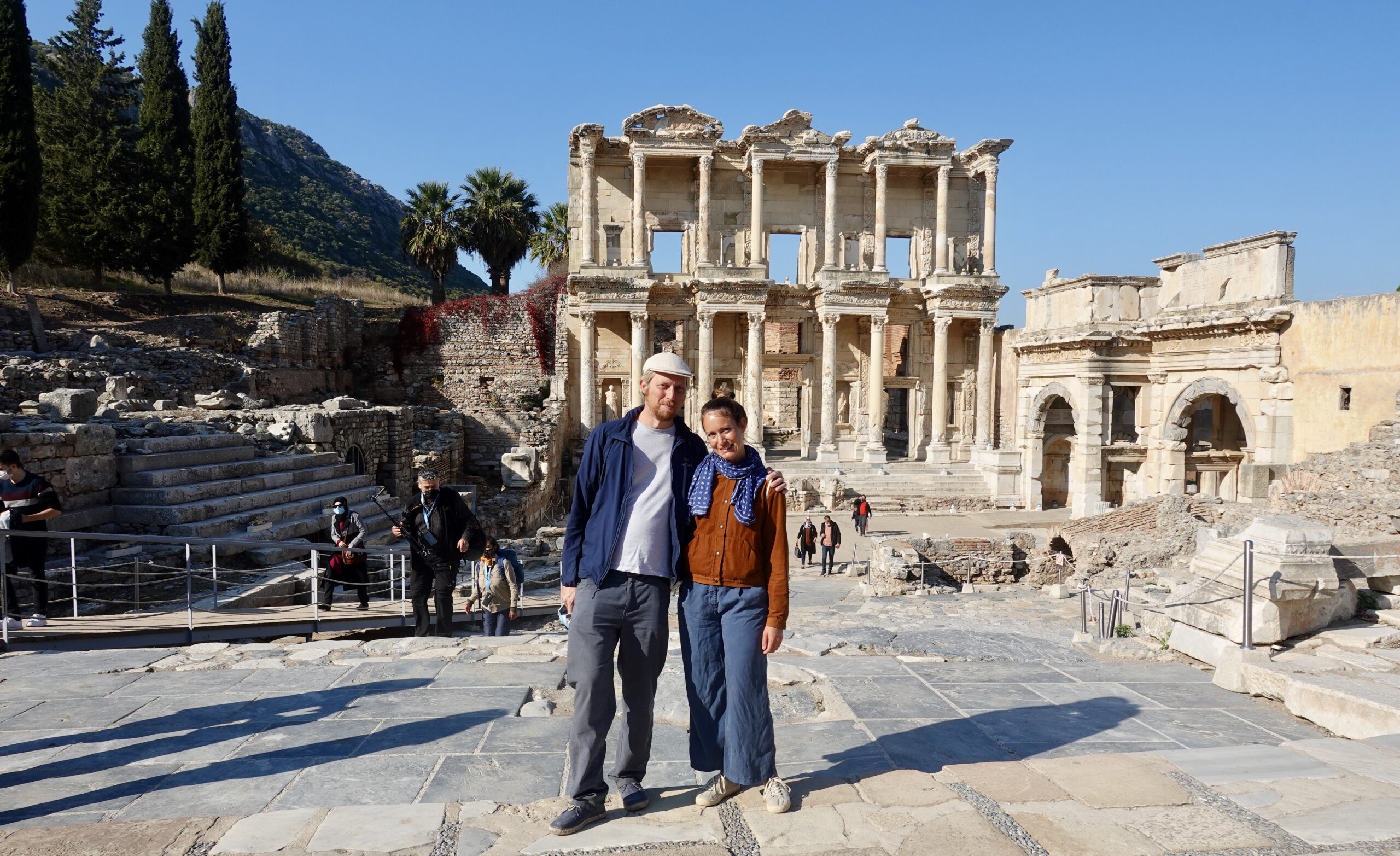

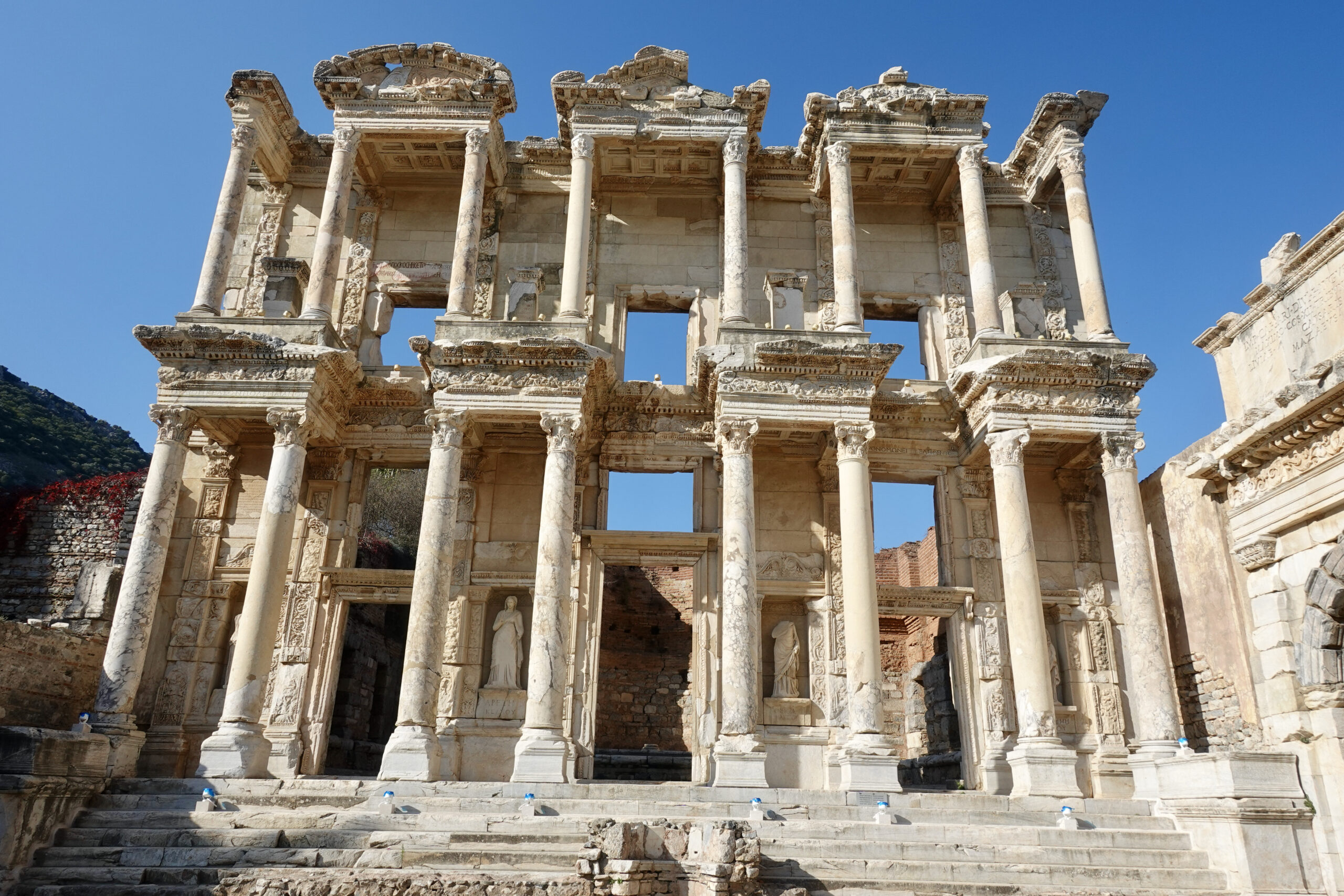

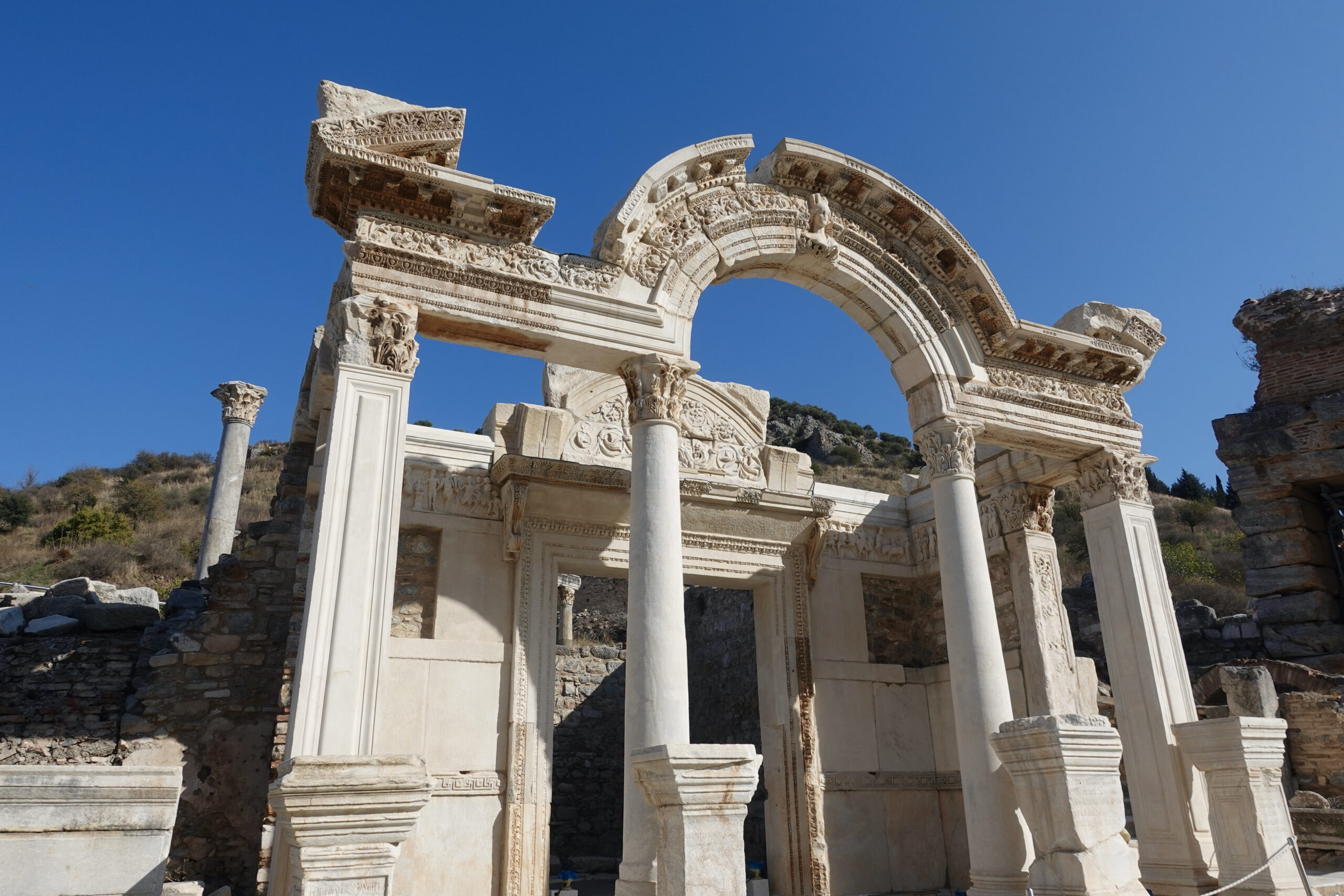
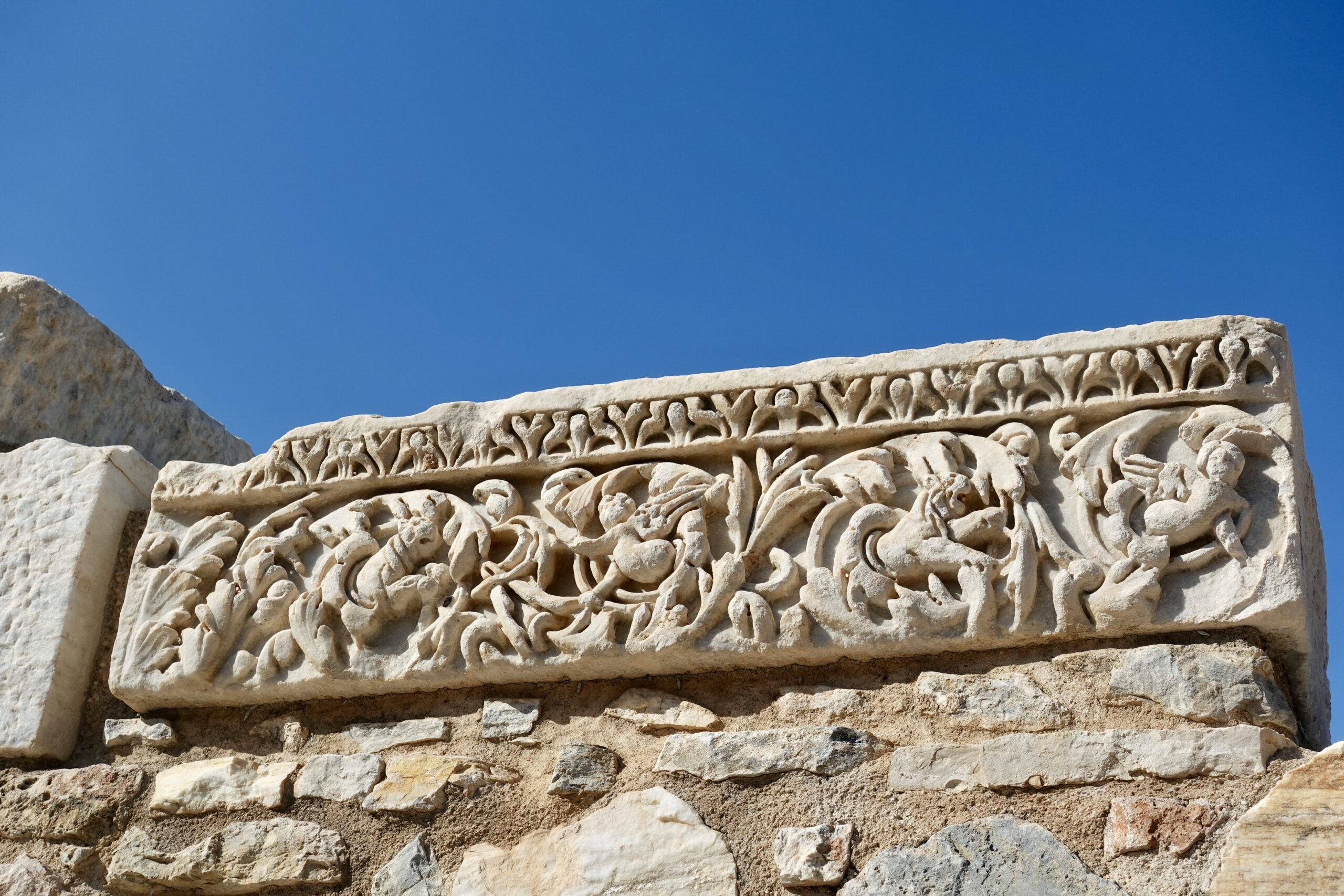
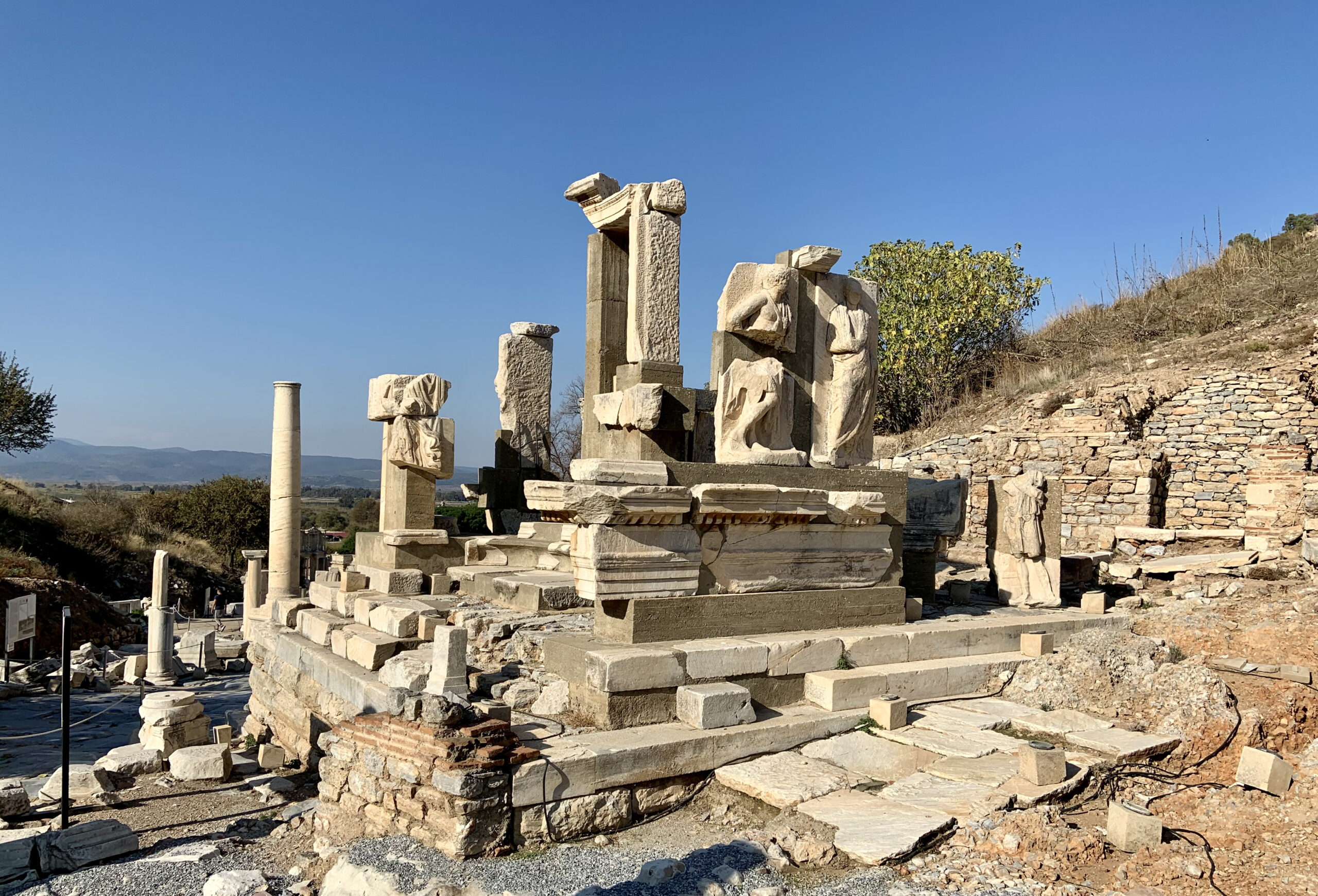
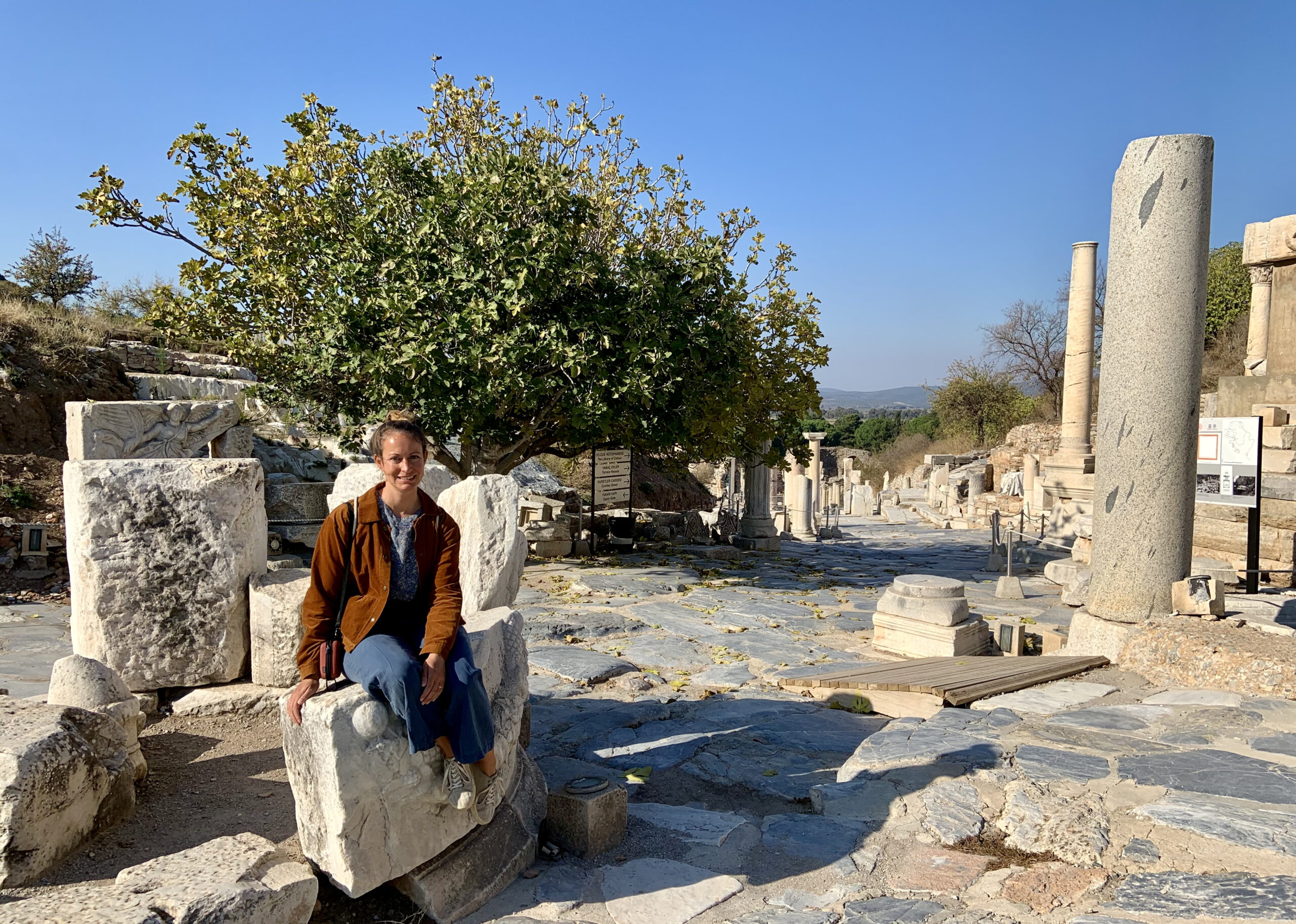
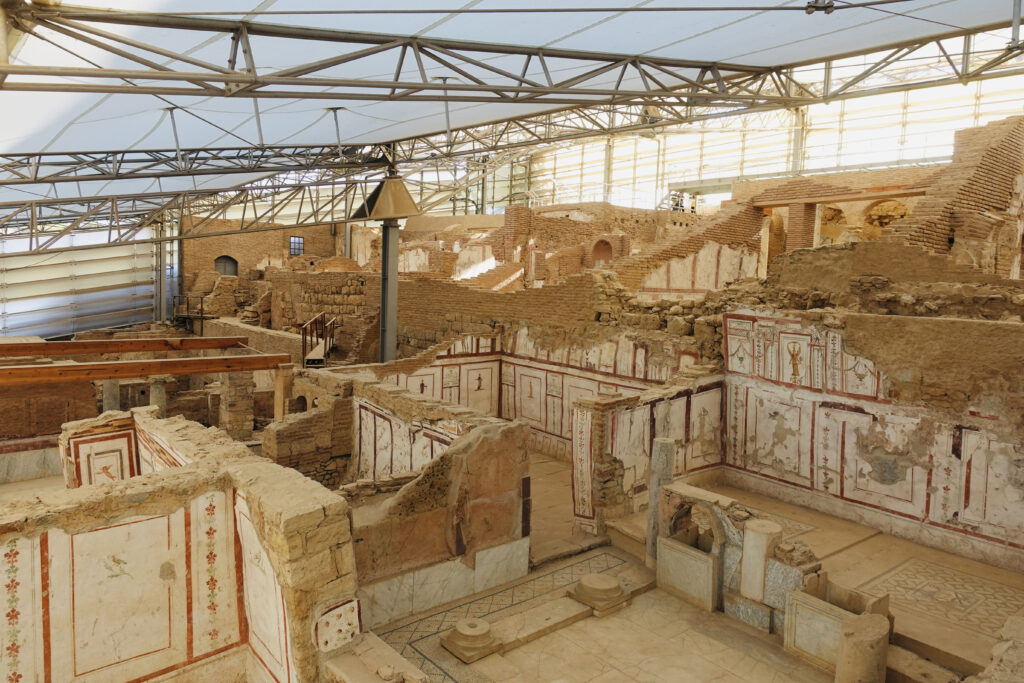
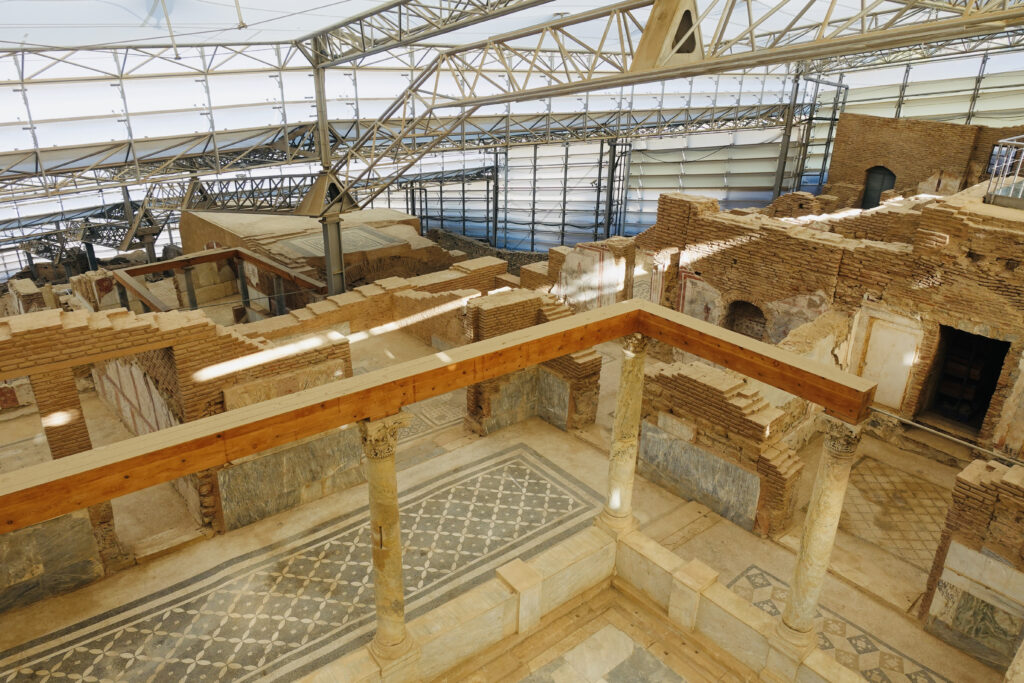

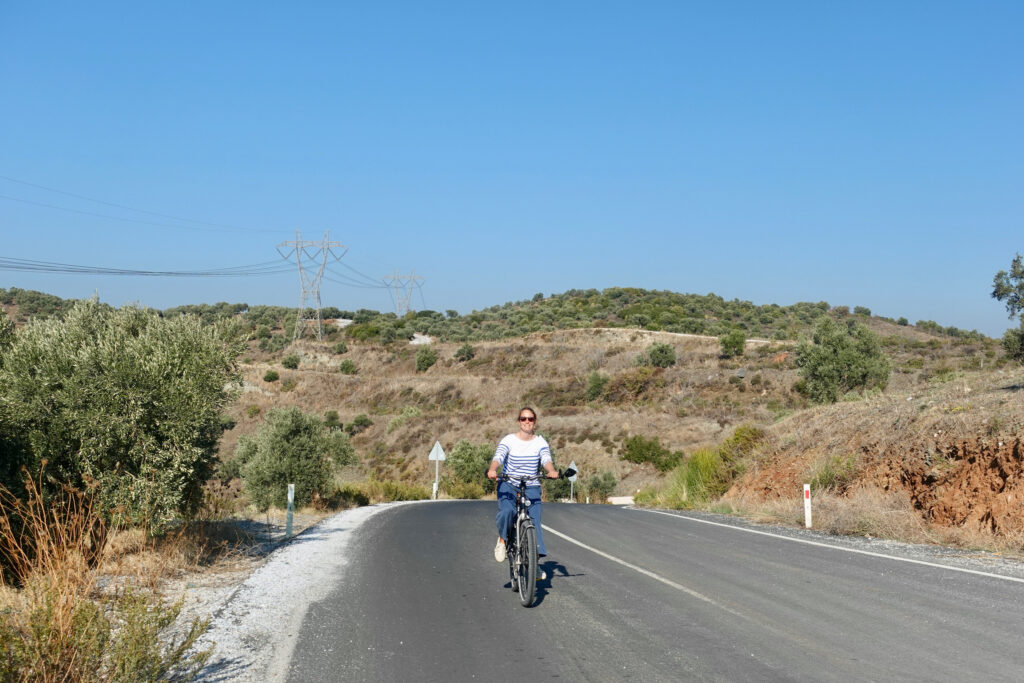
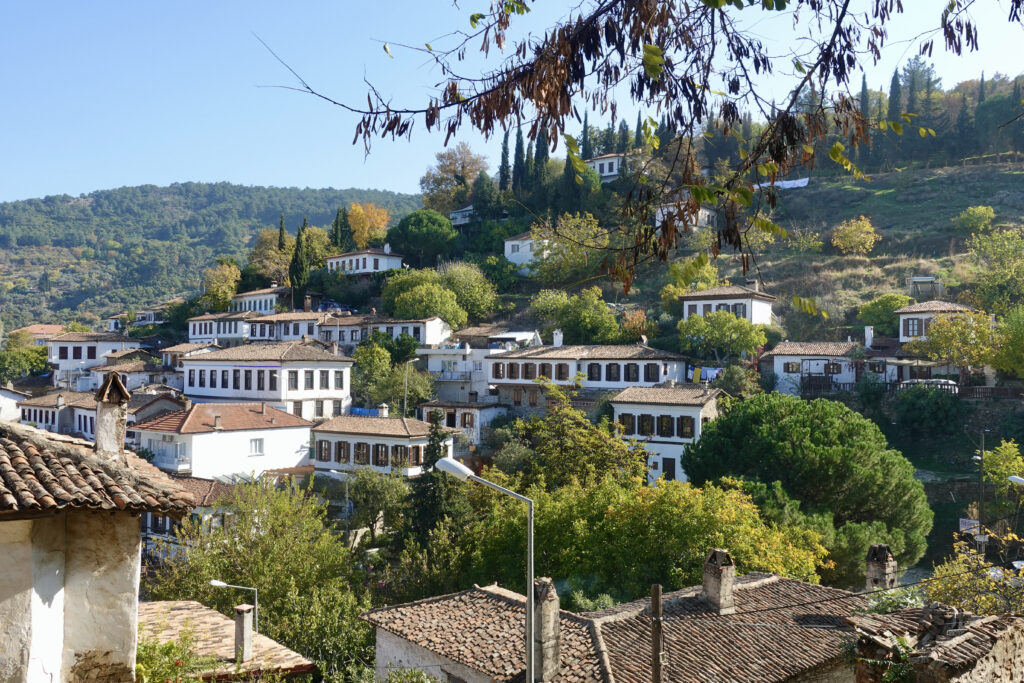
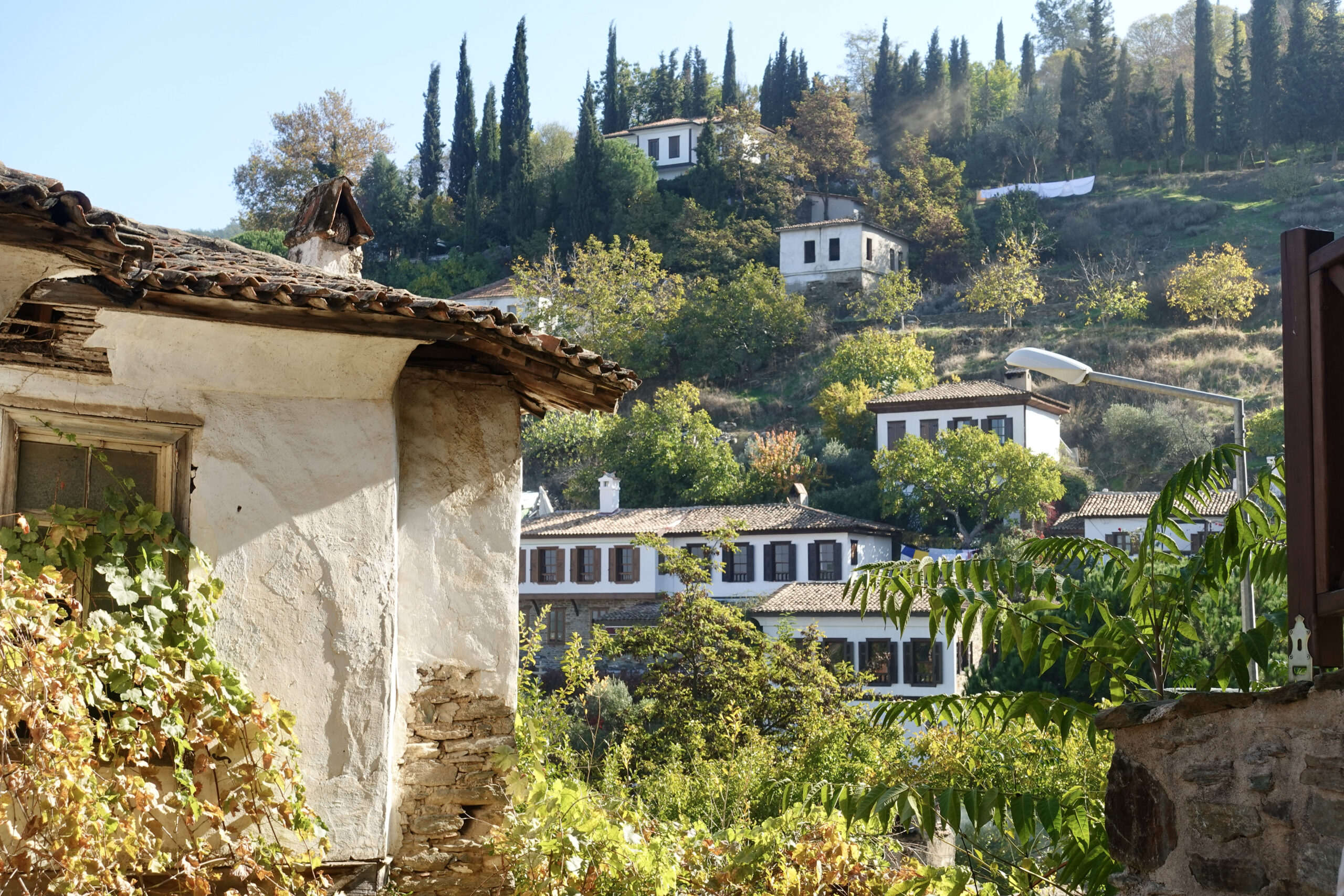
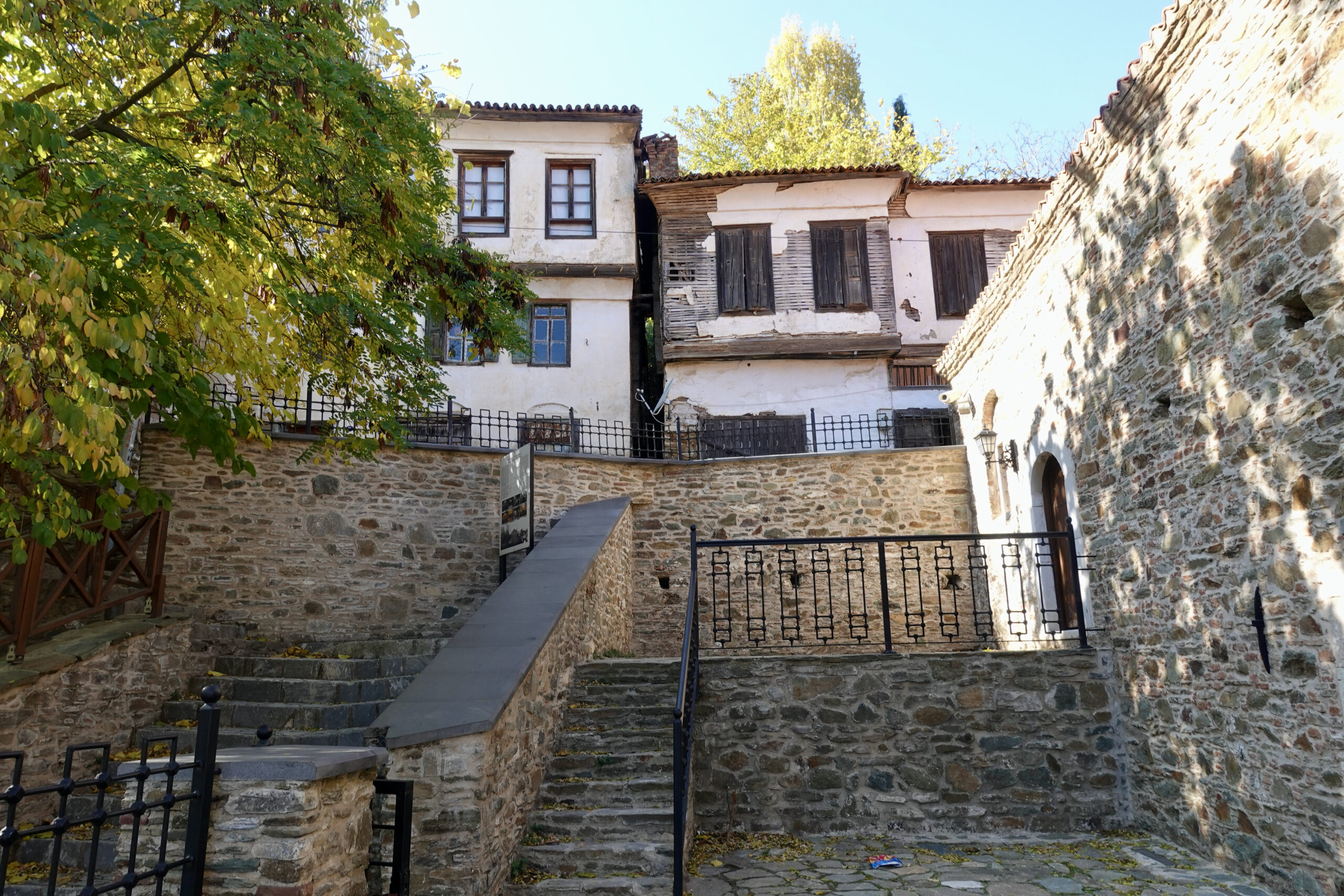
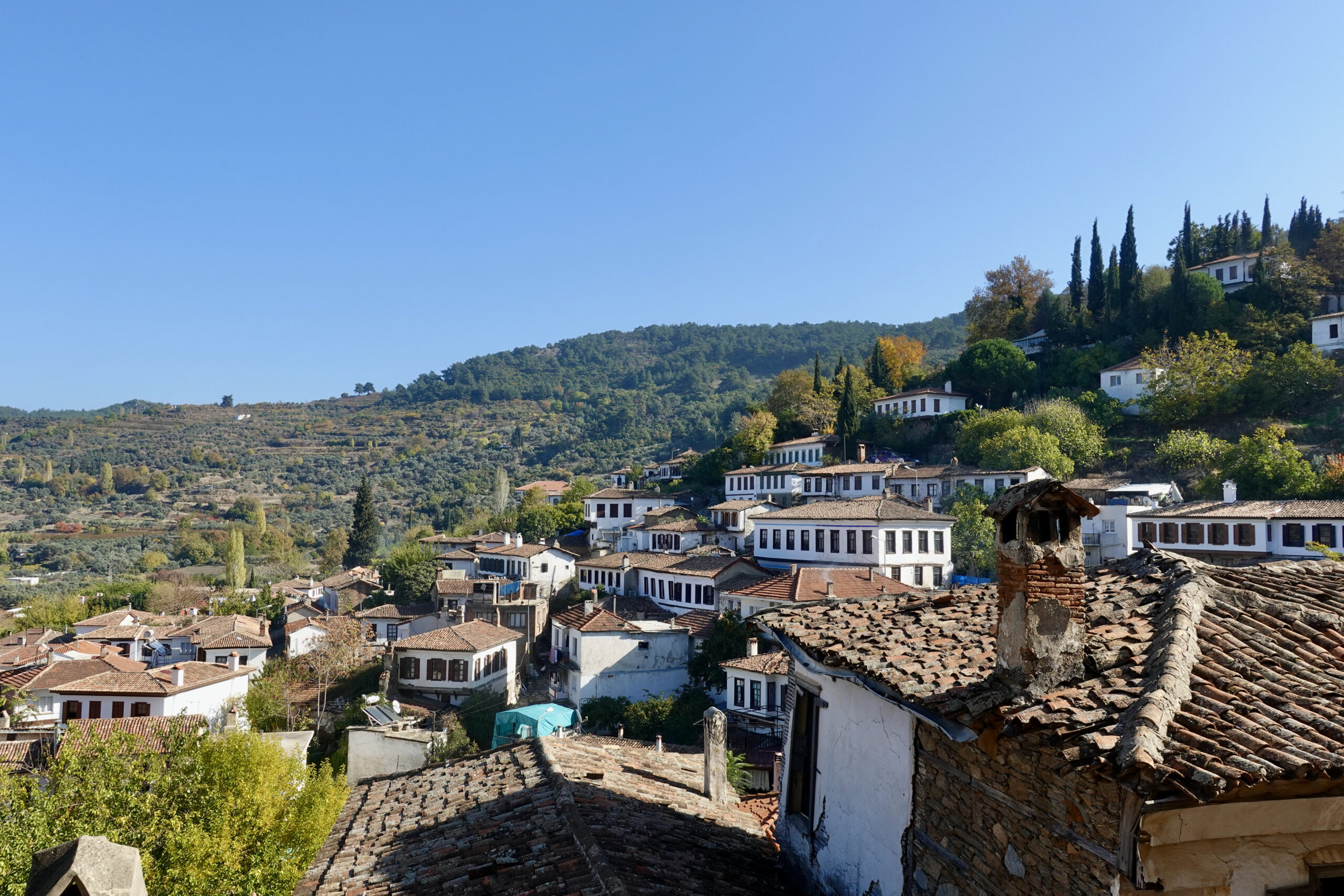
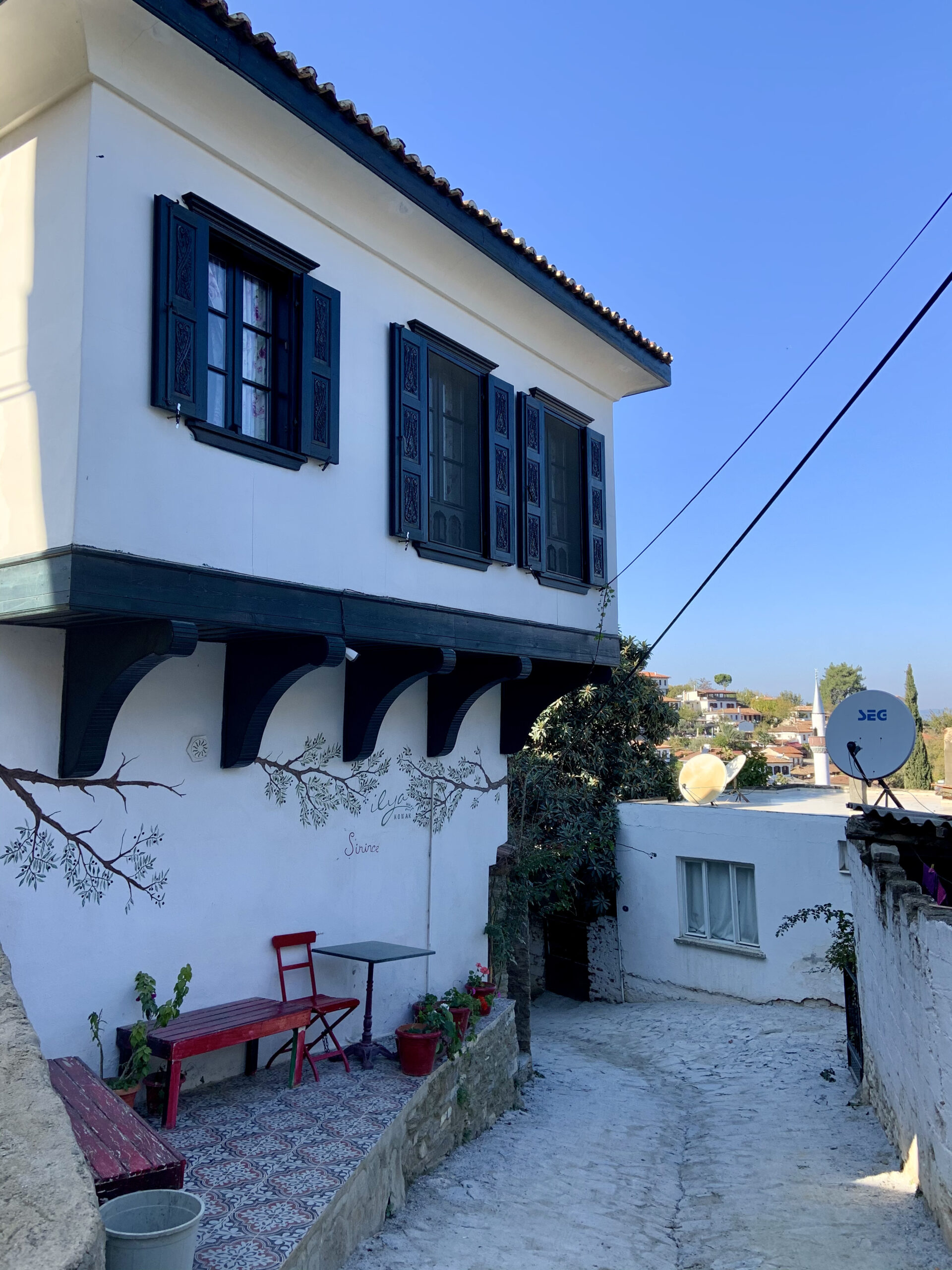
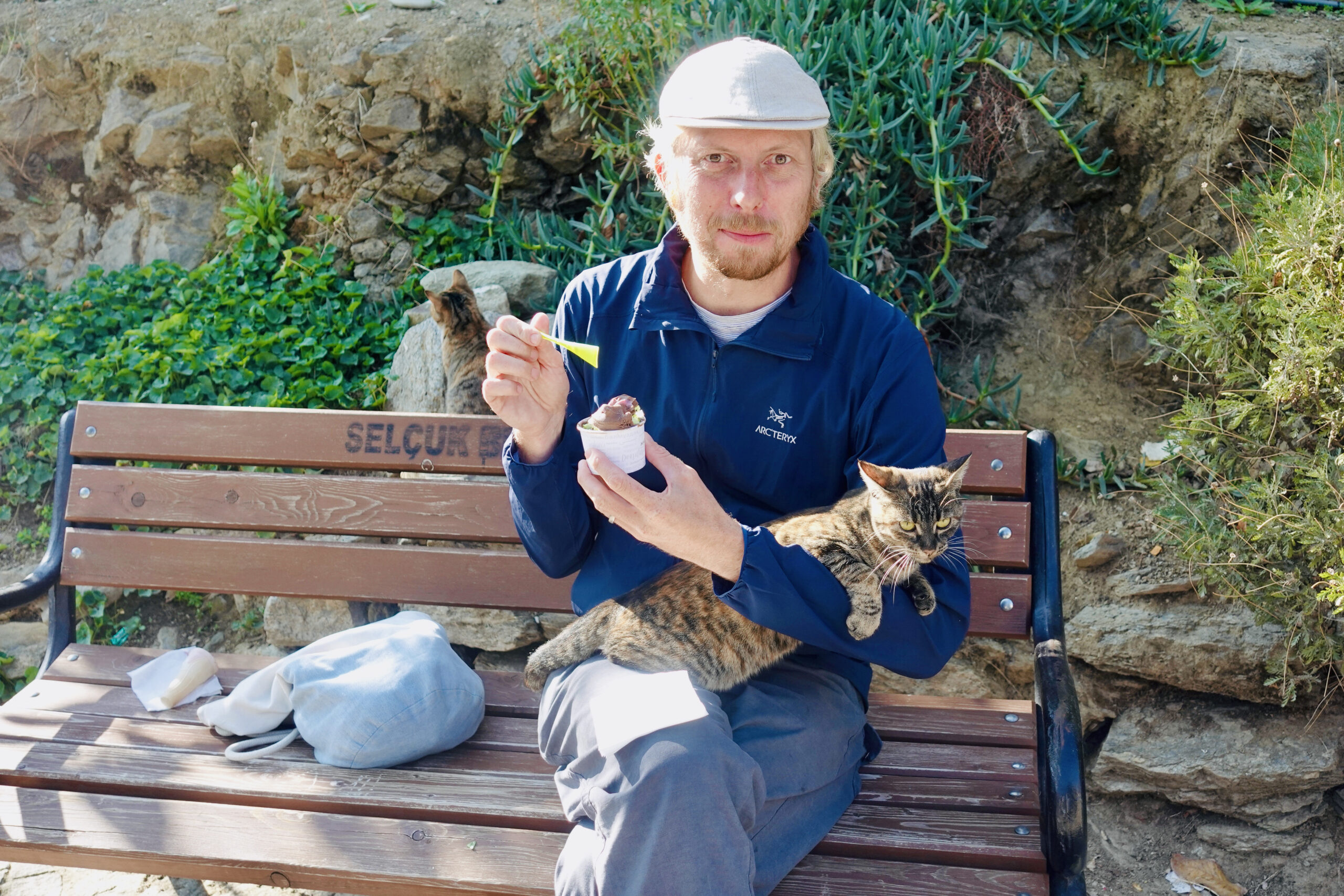
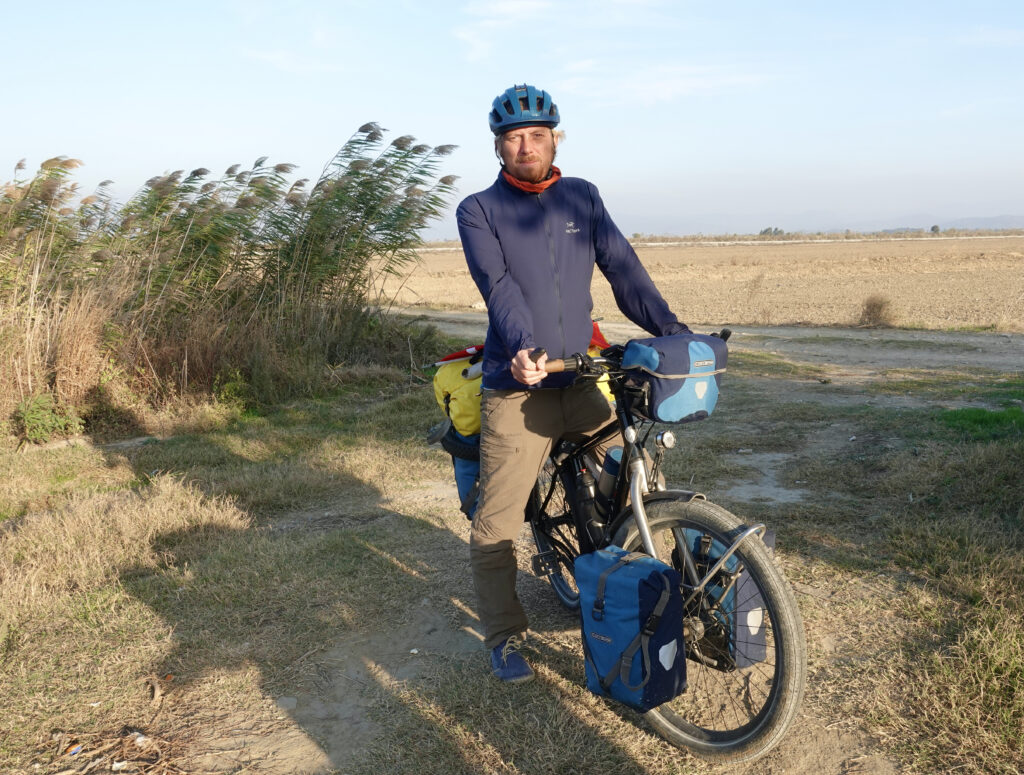
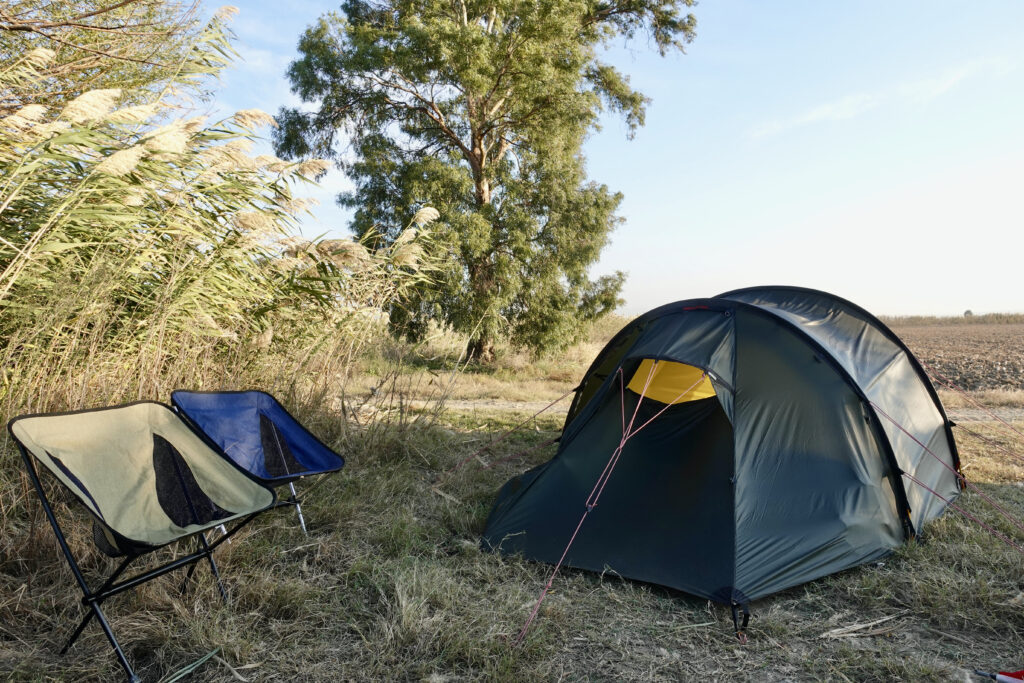
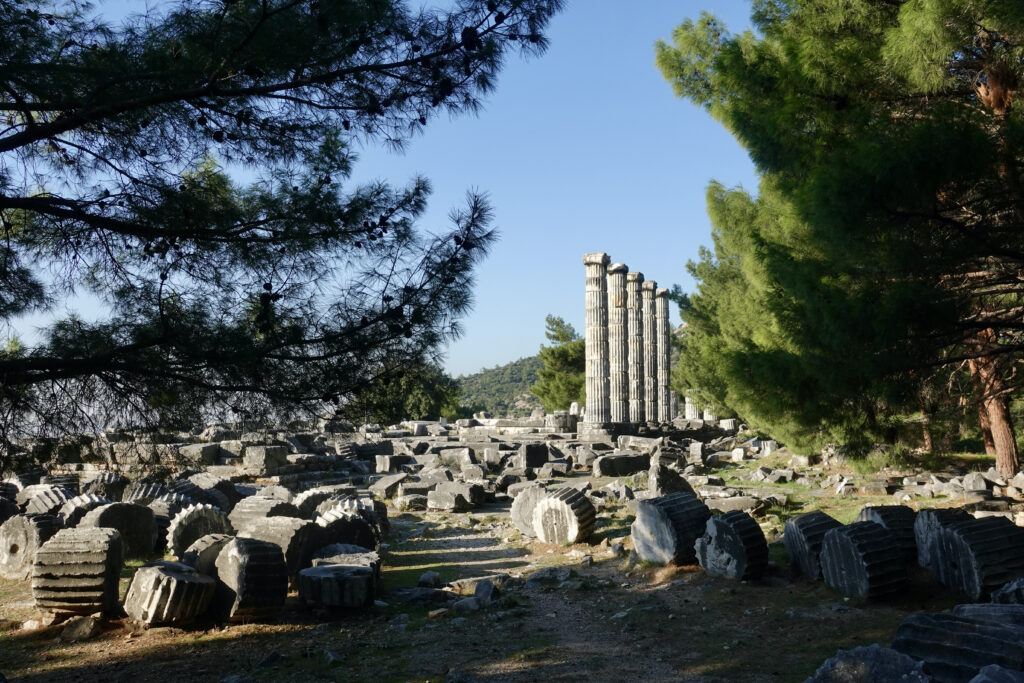
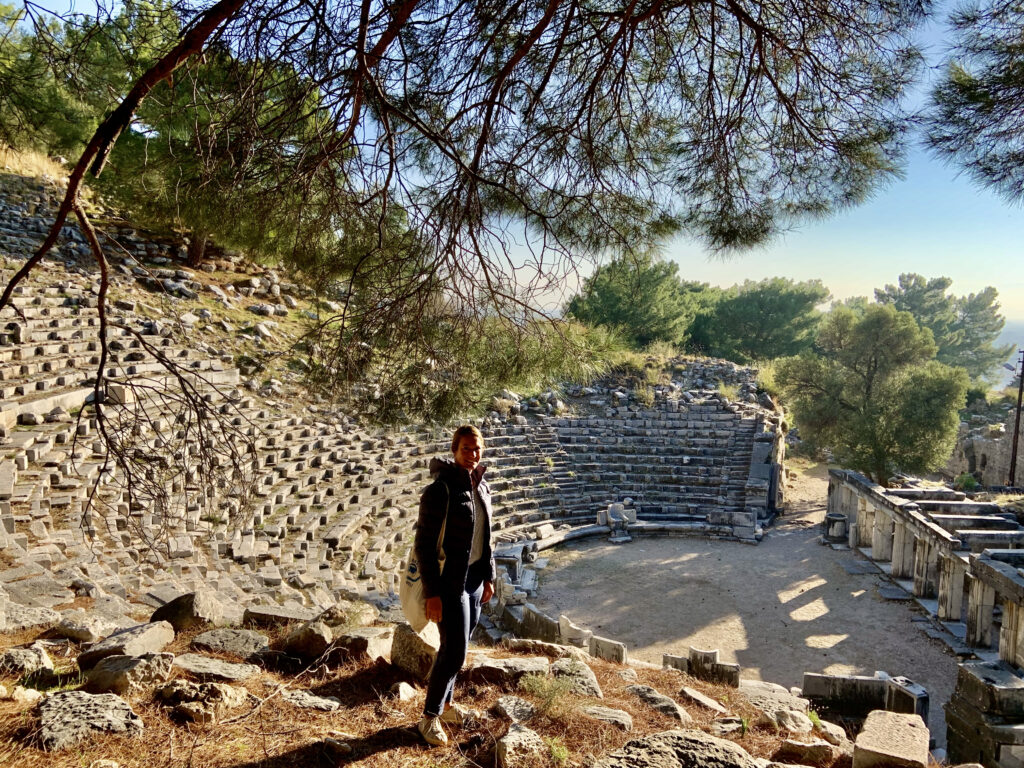
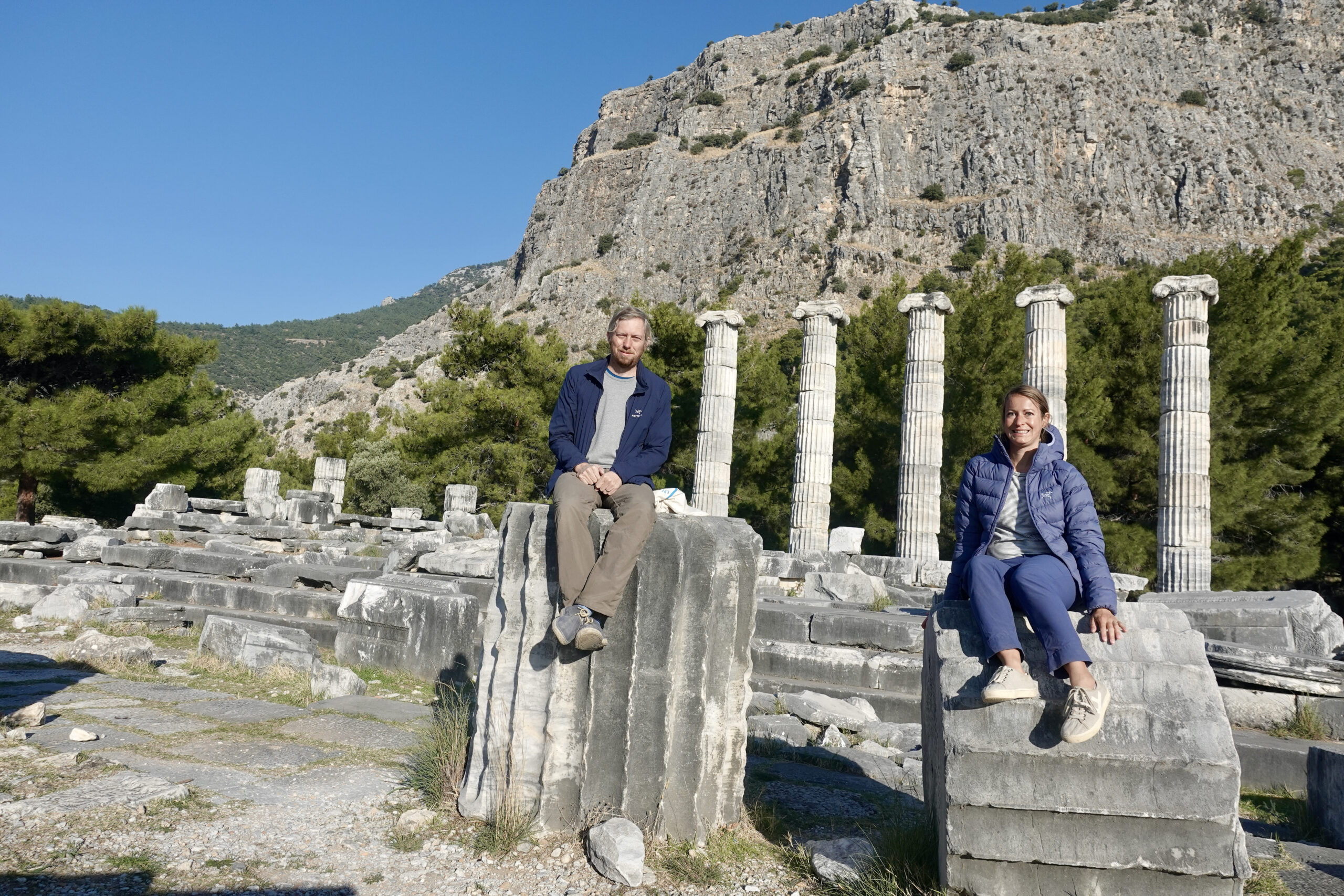
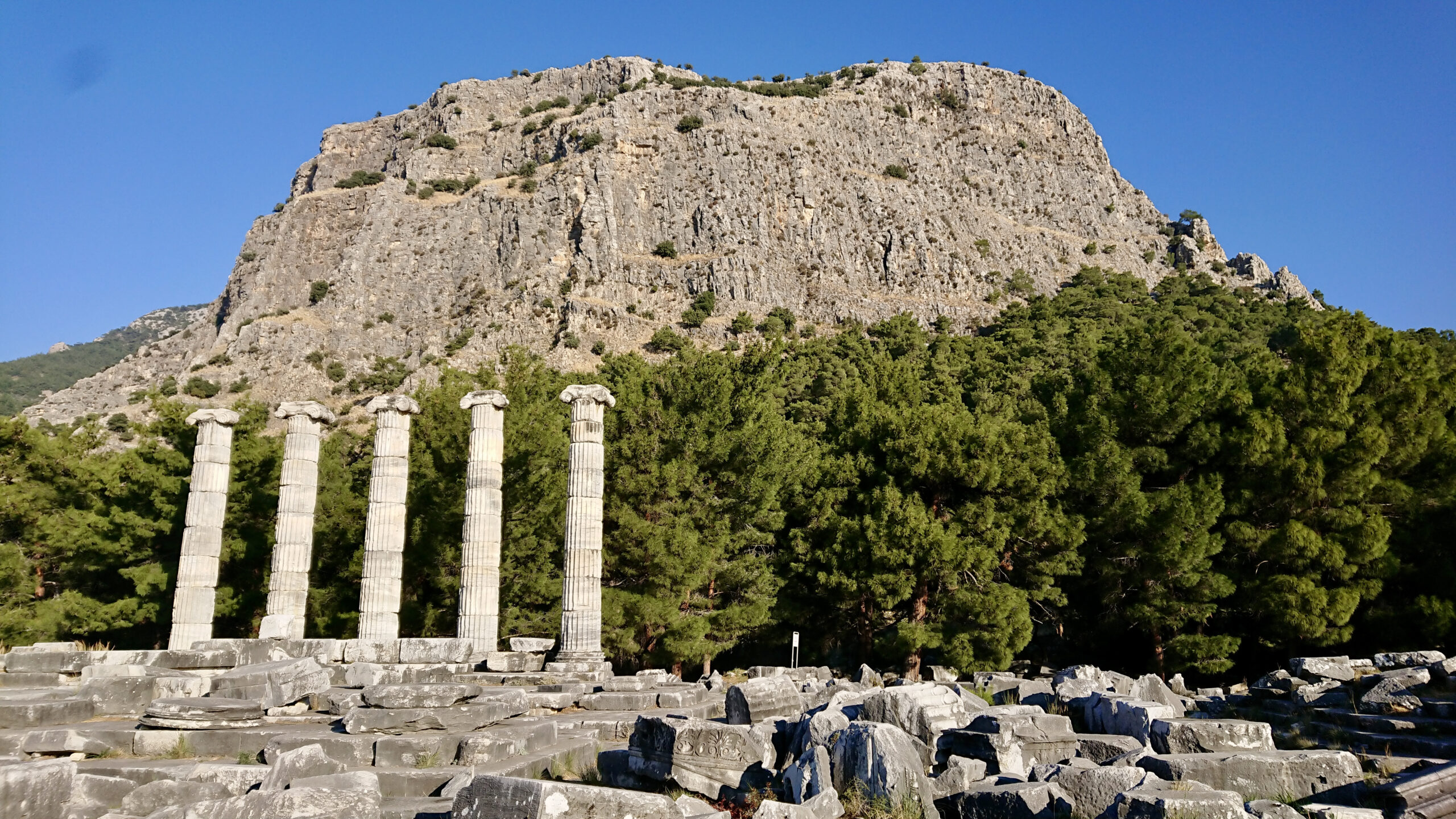
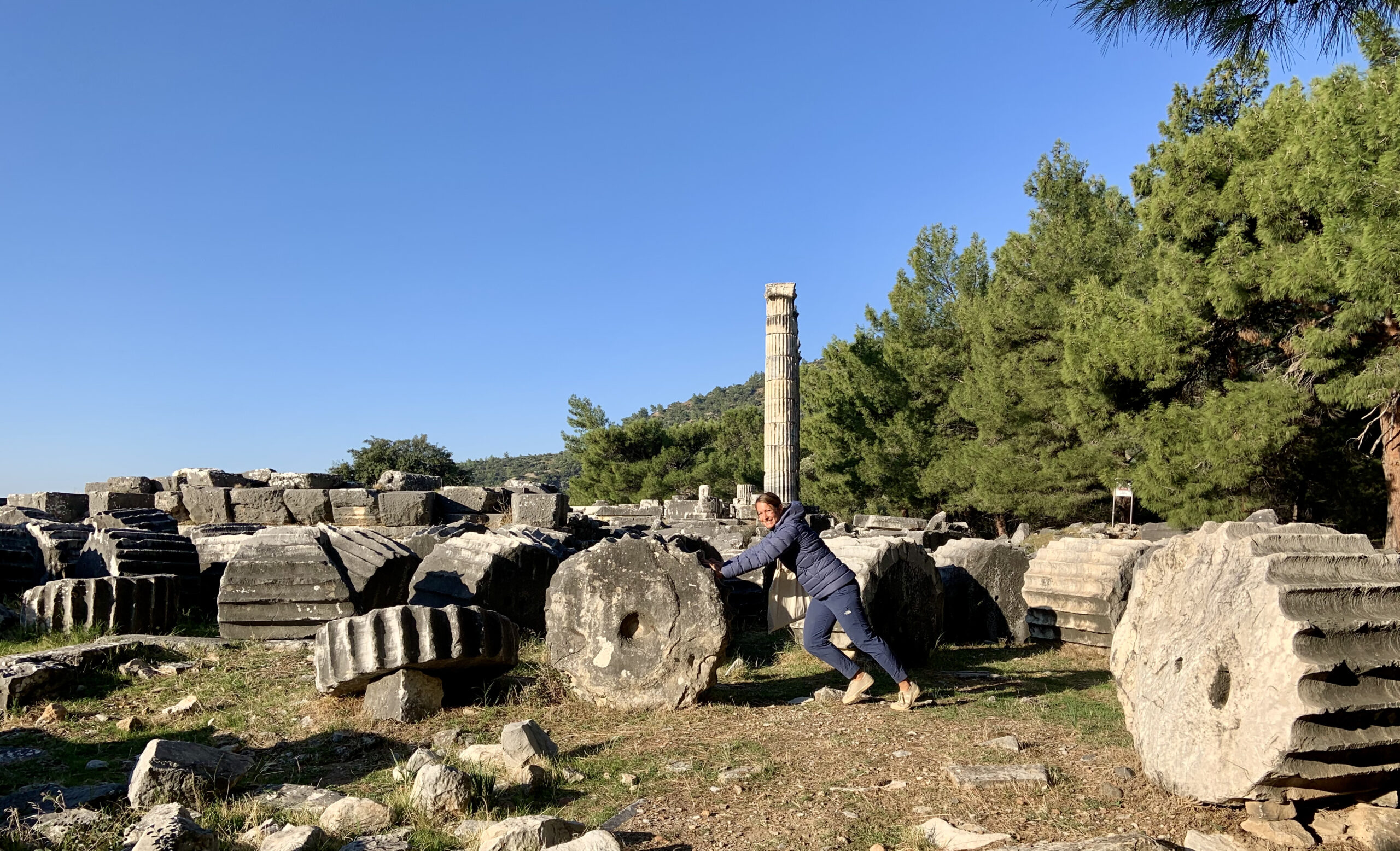
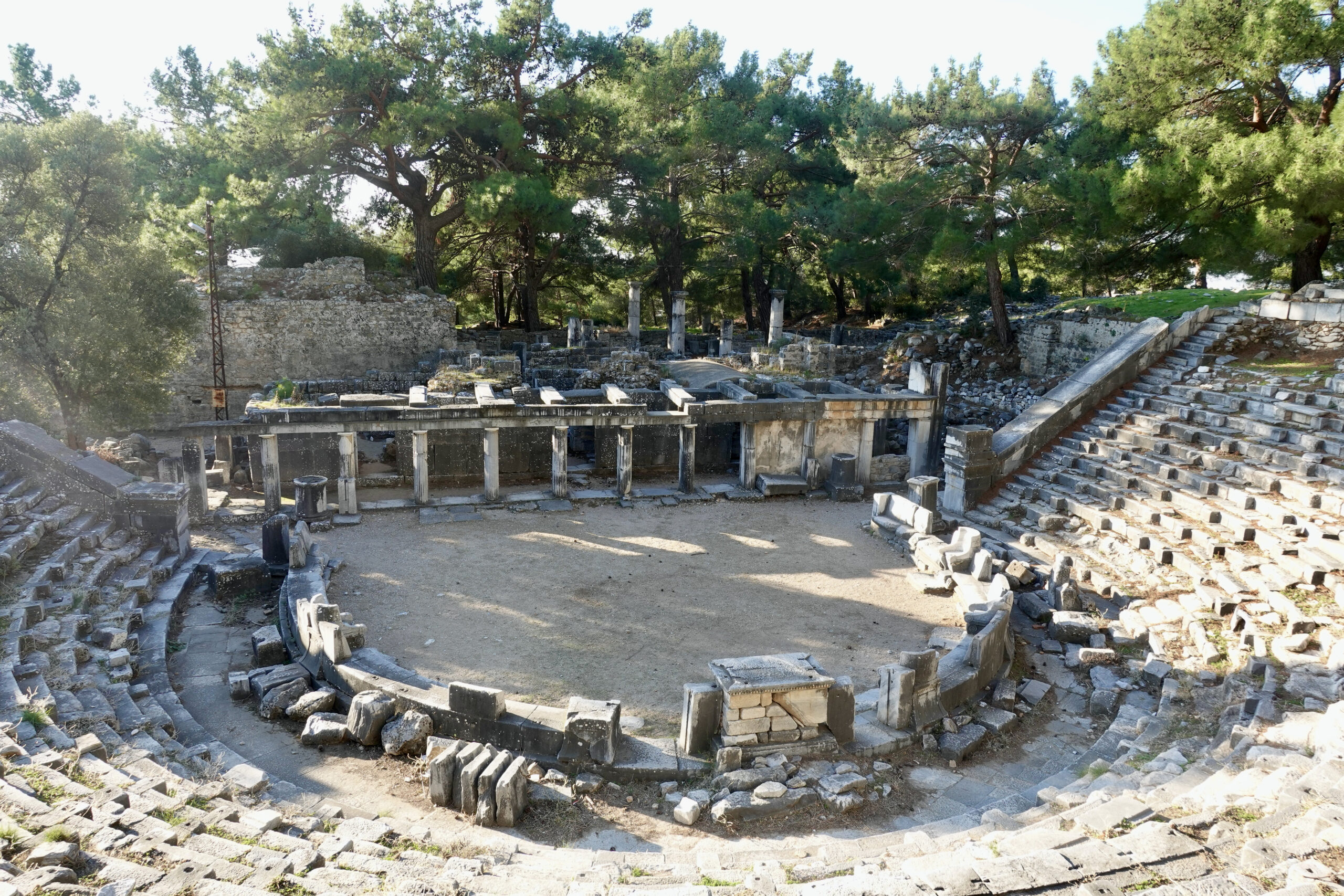
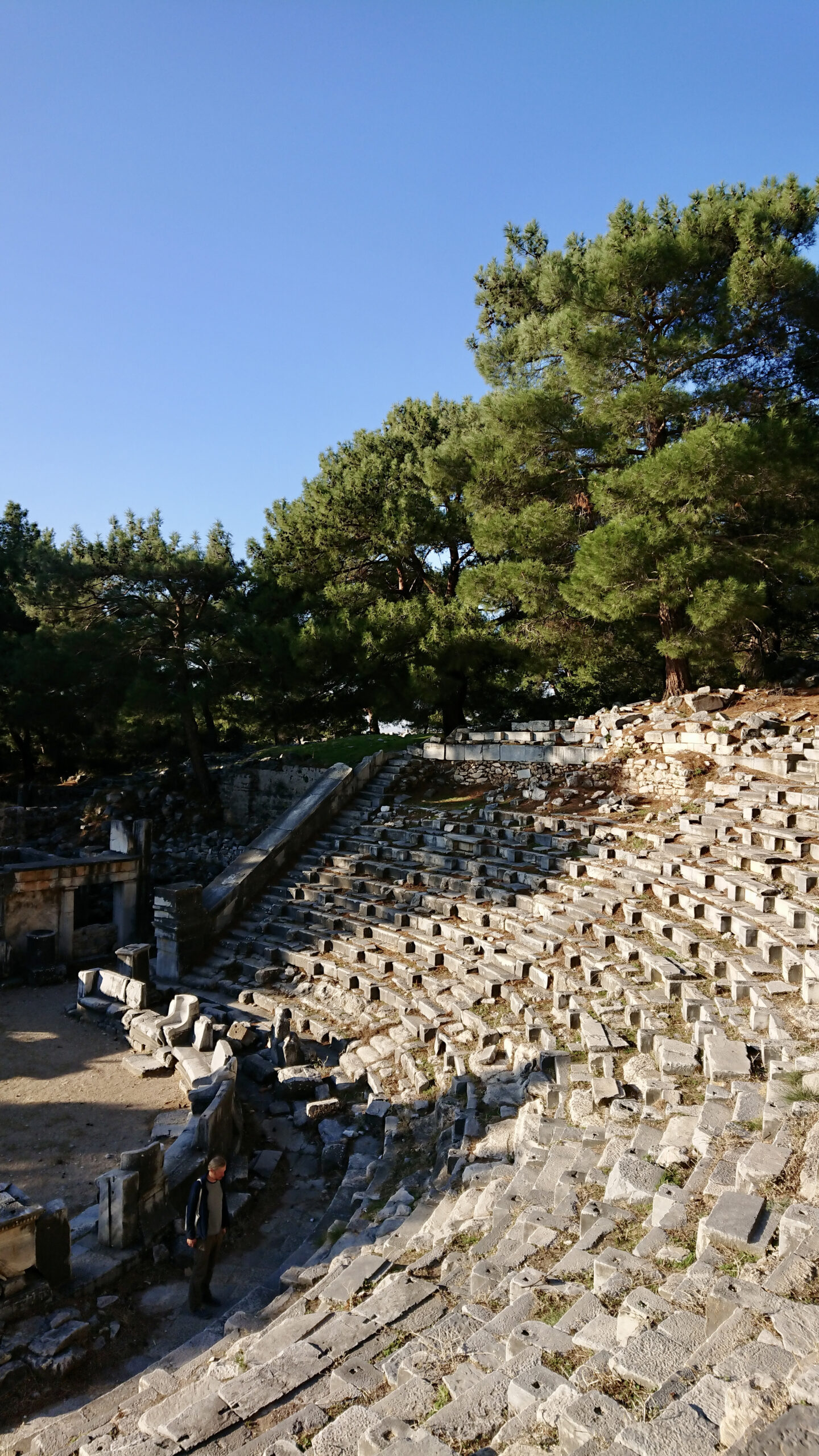
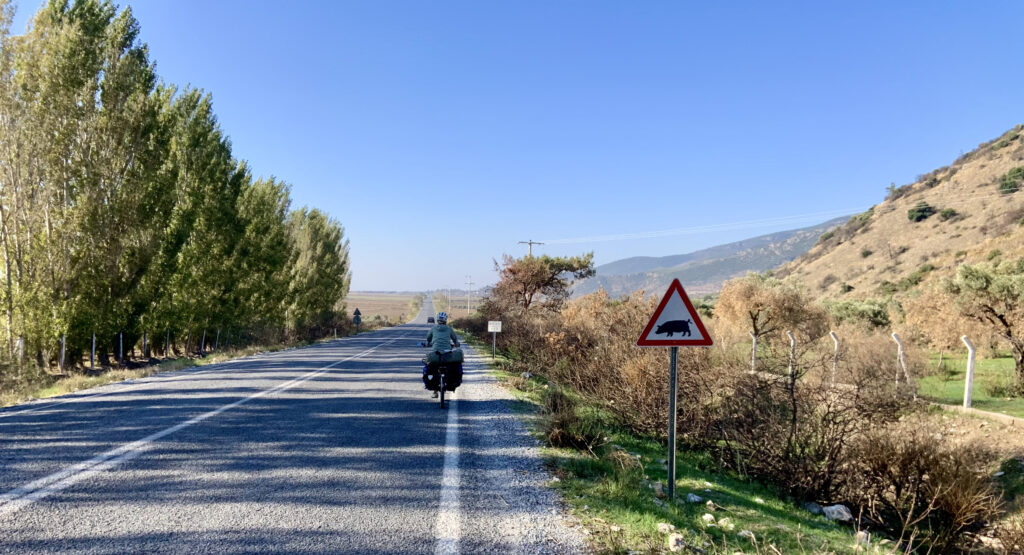
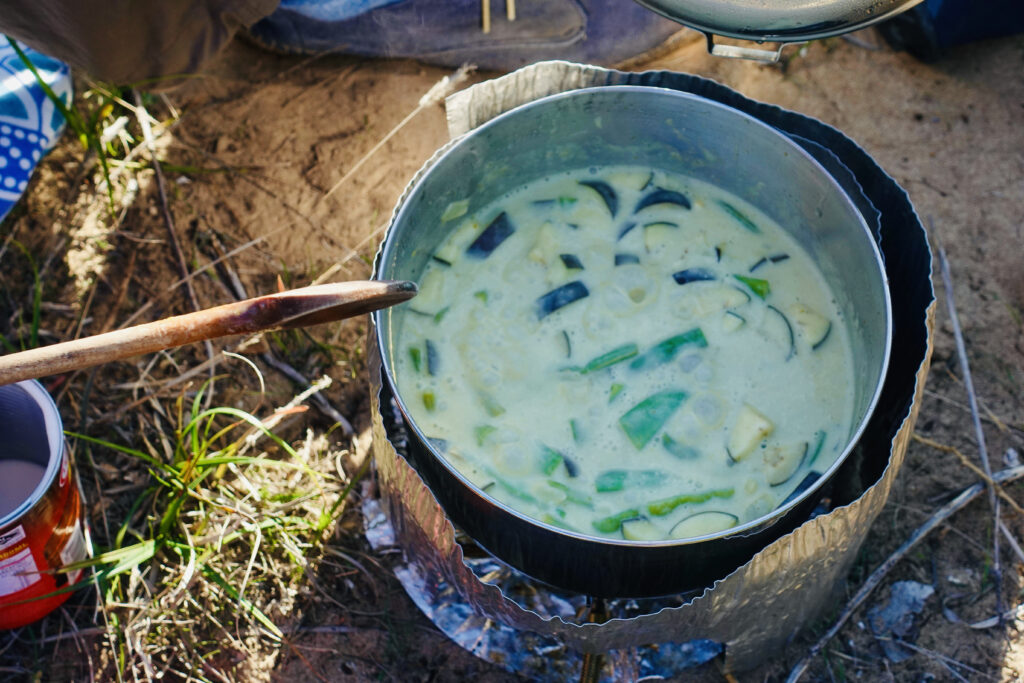

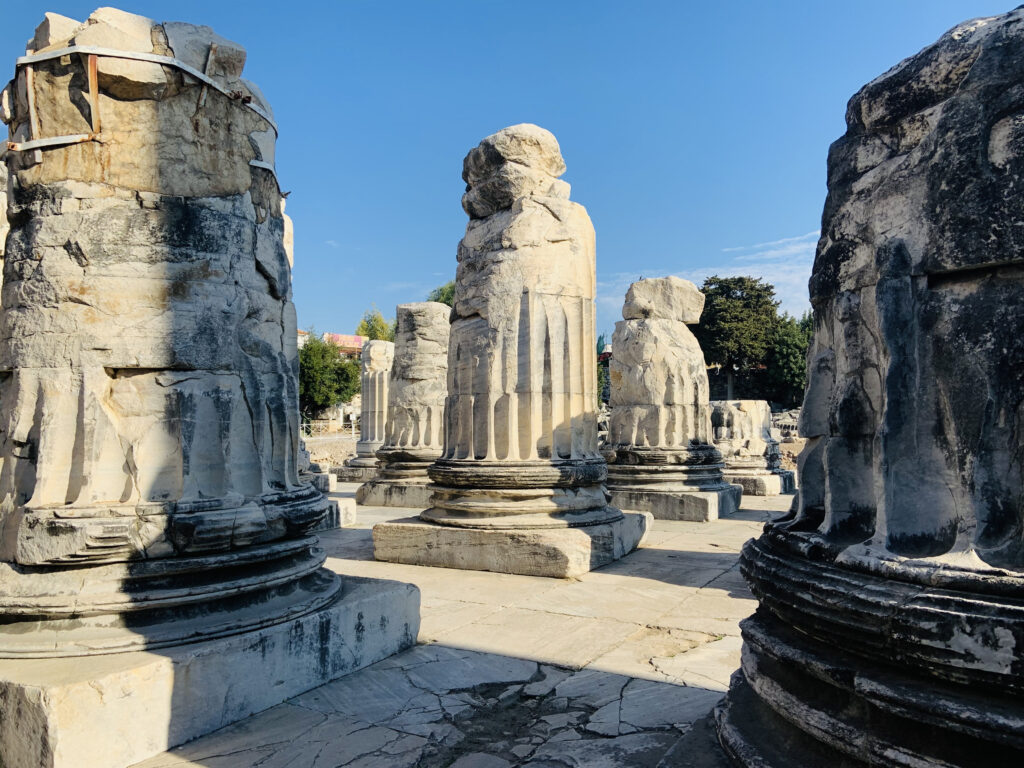

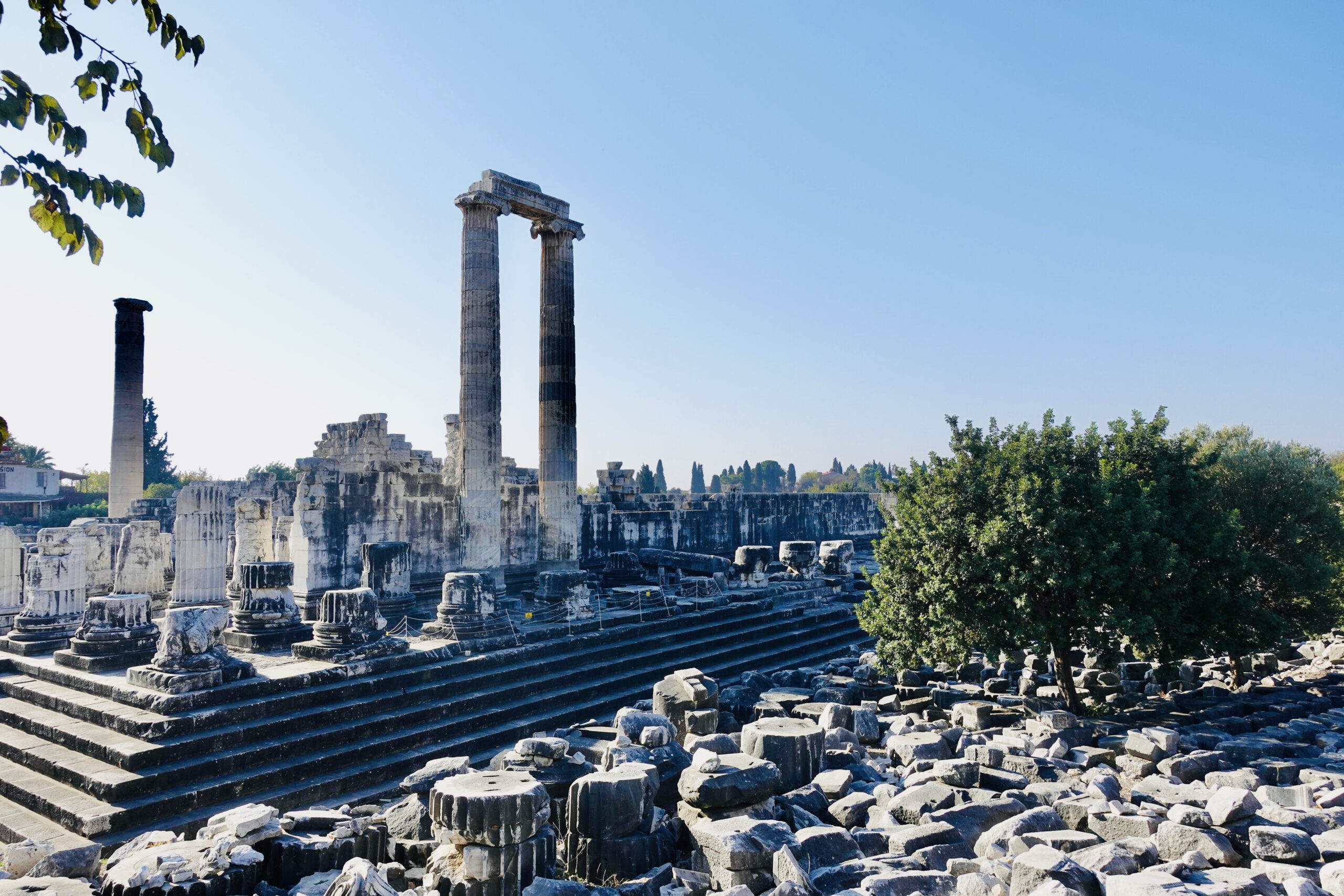
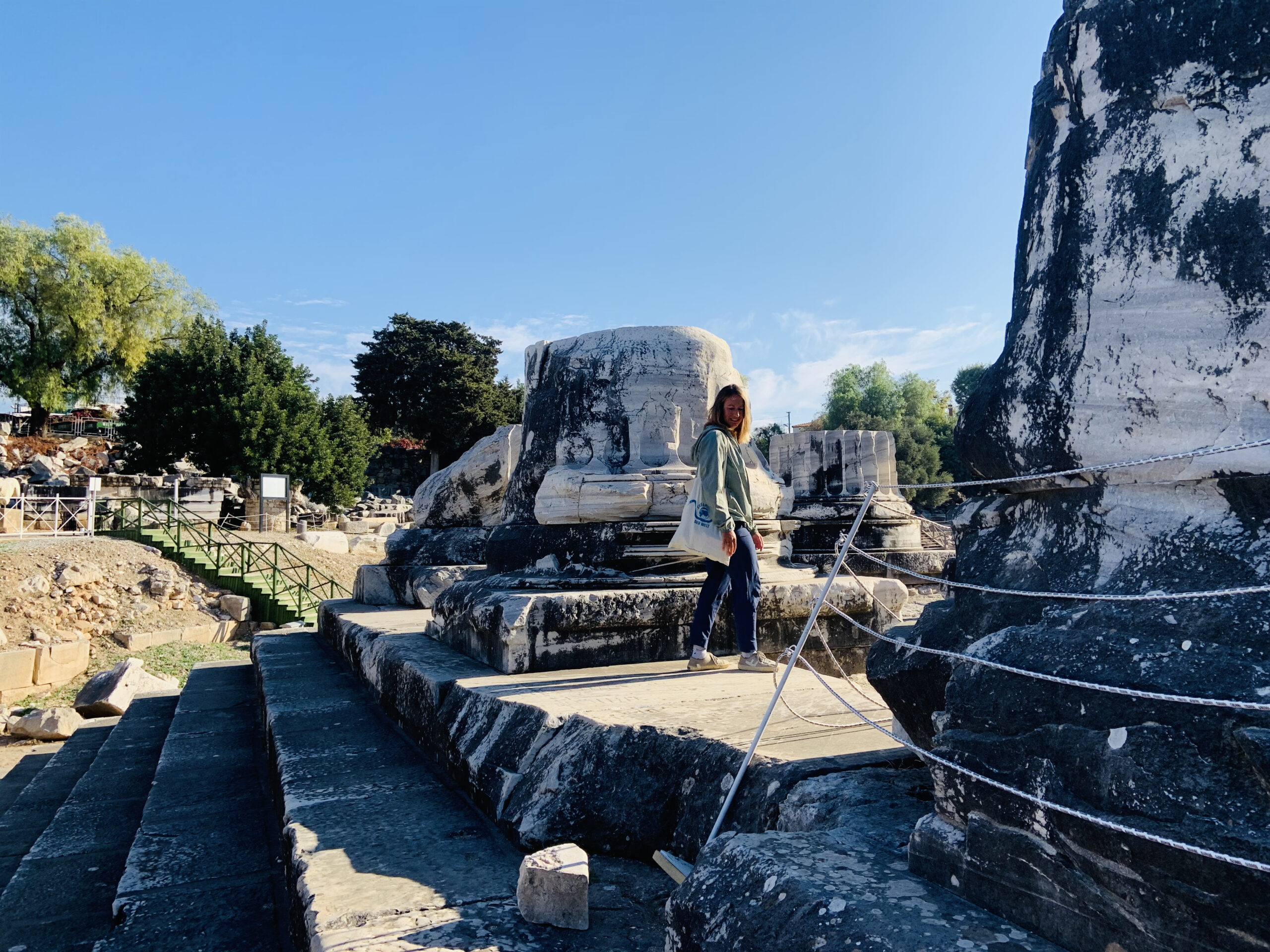

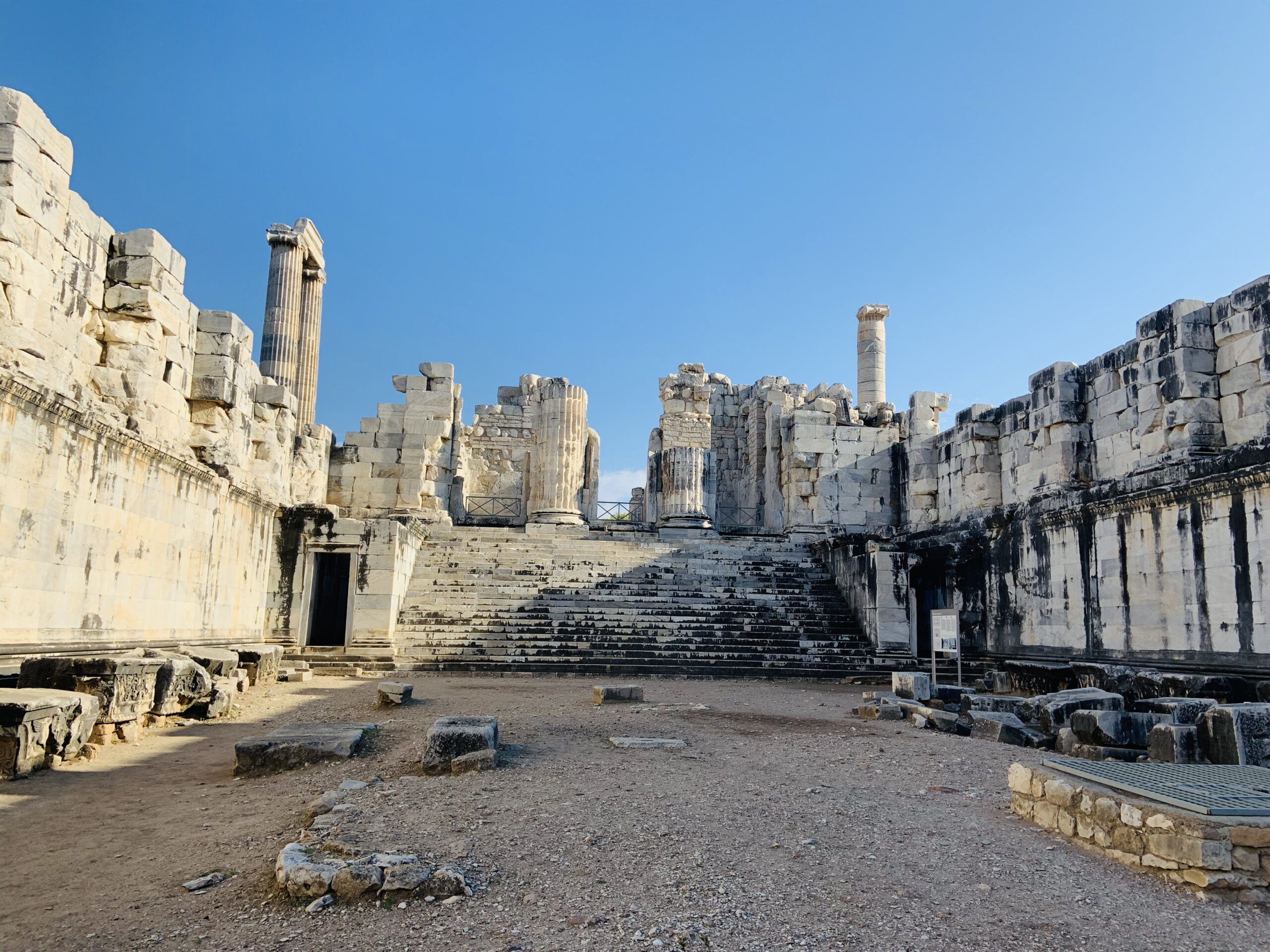
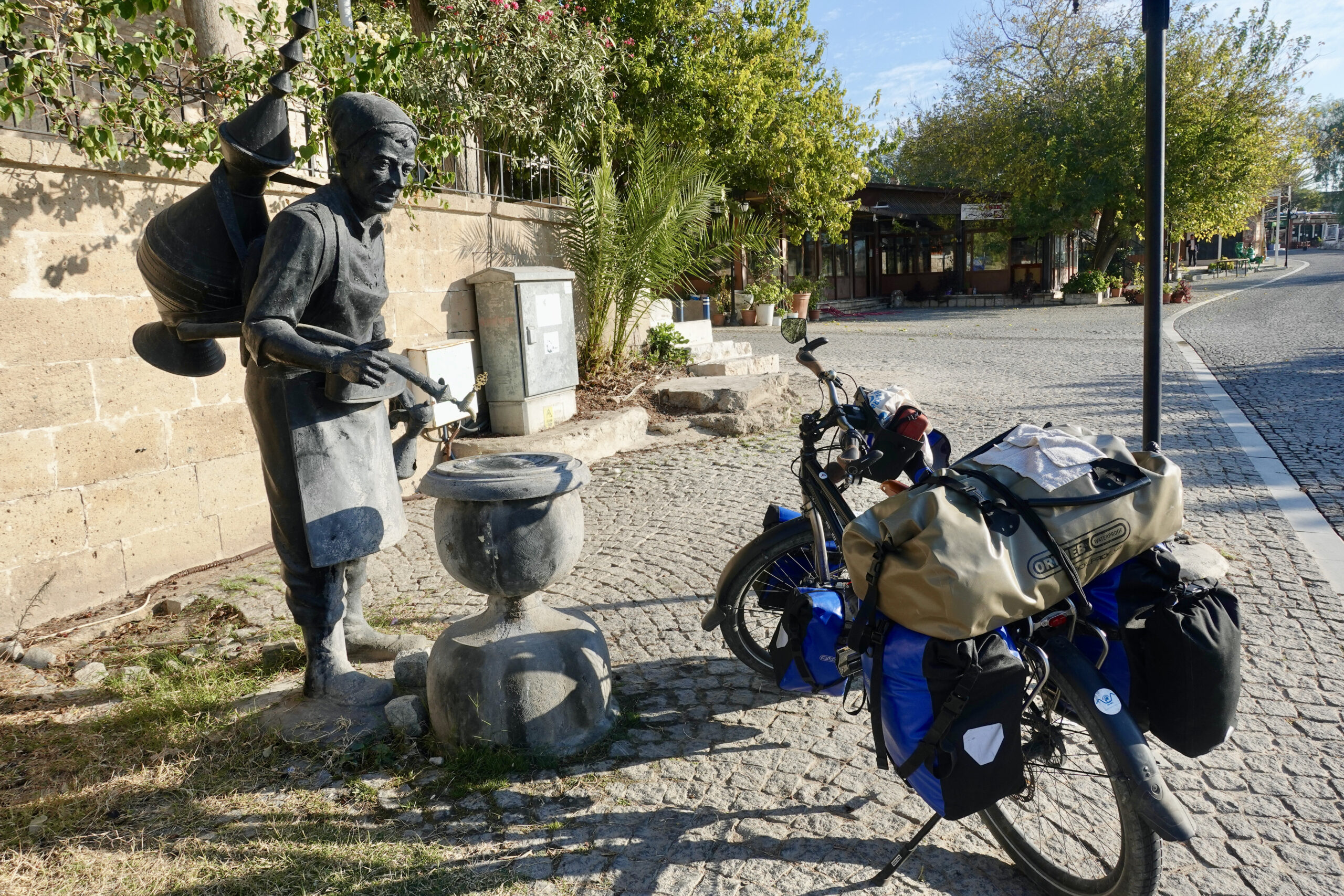
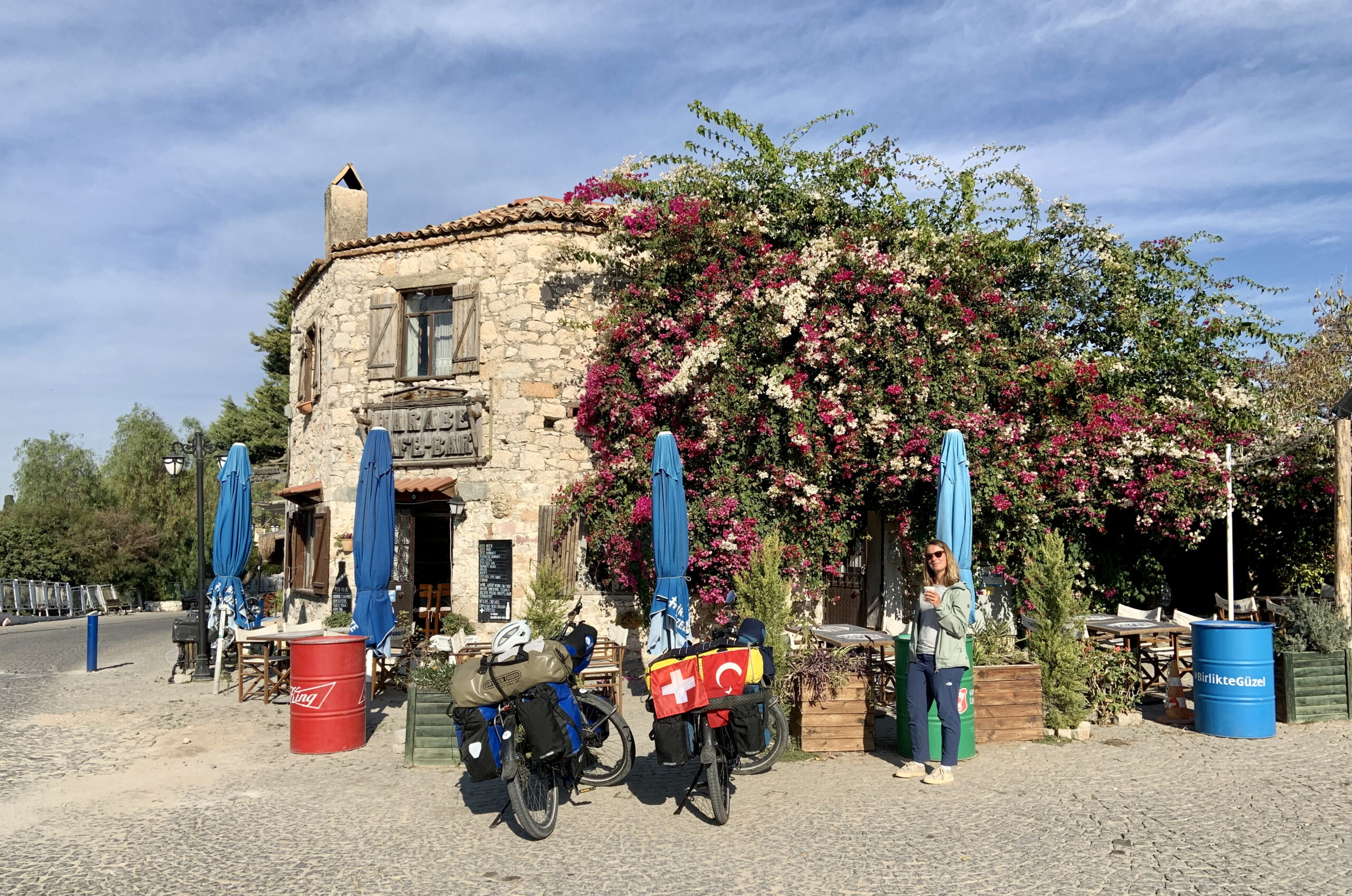
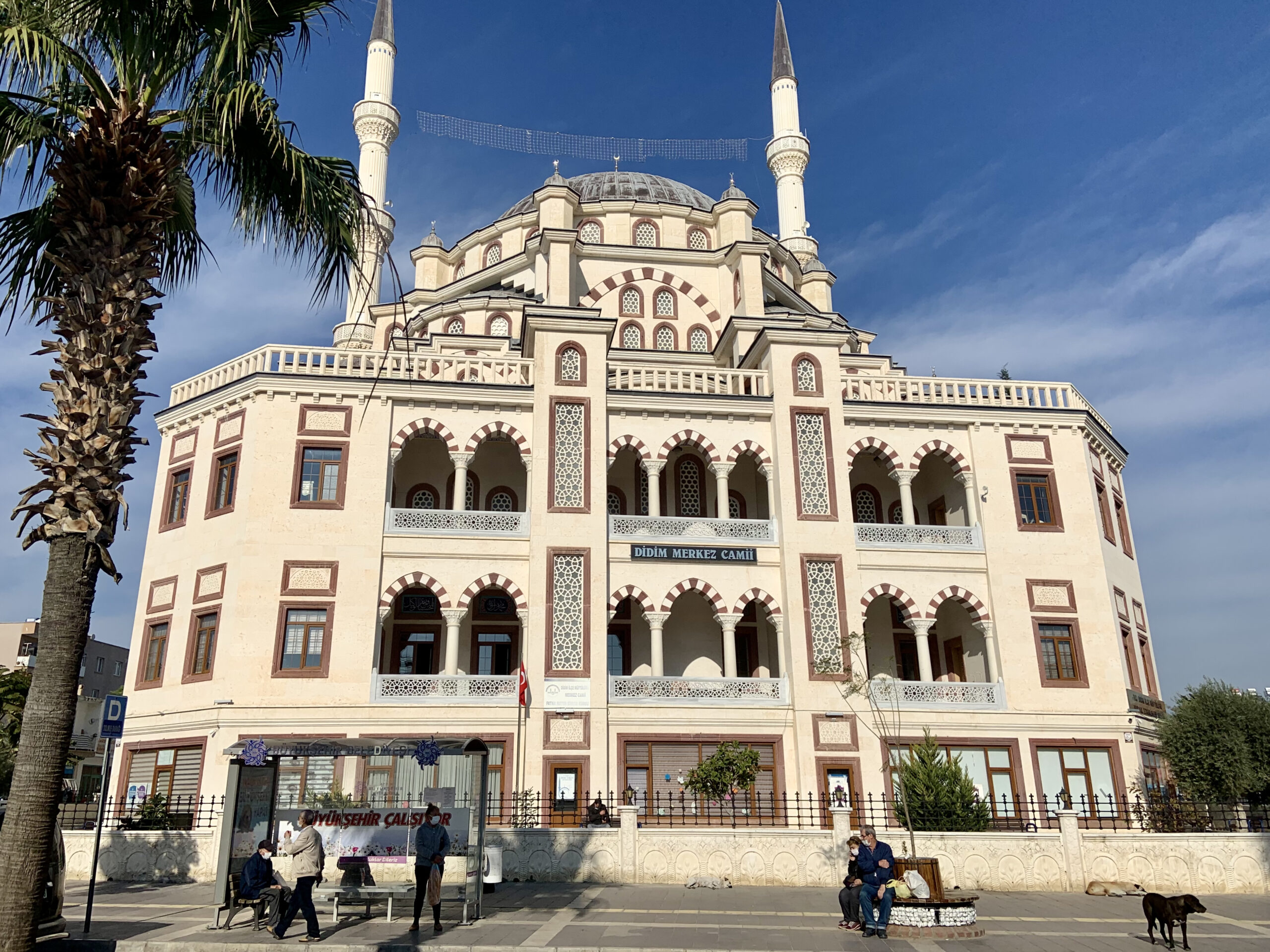

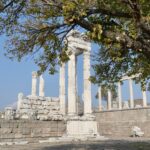
Leave a Reply